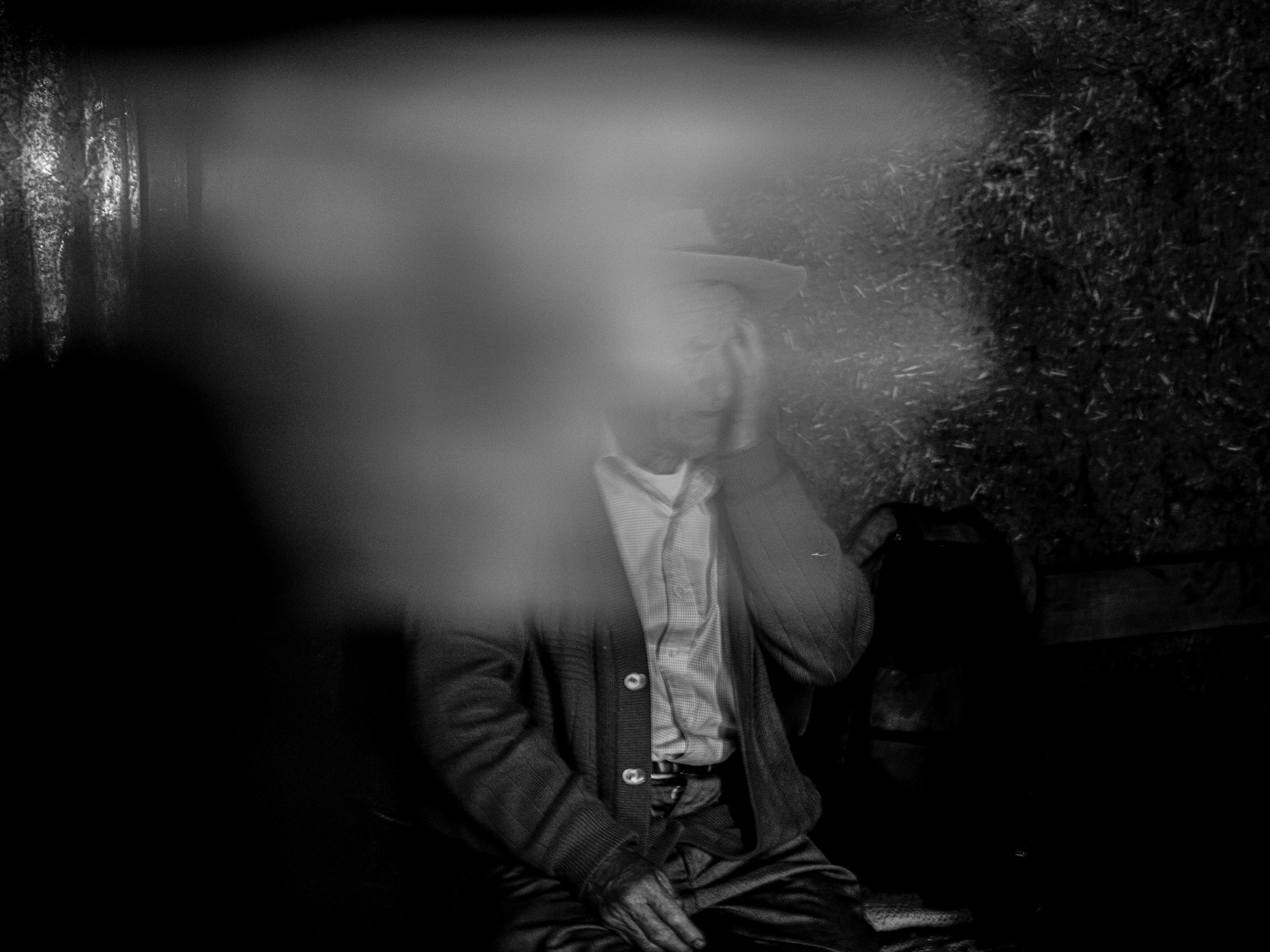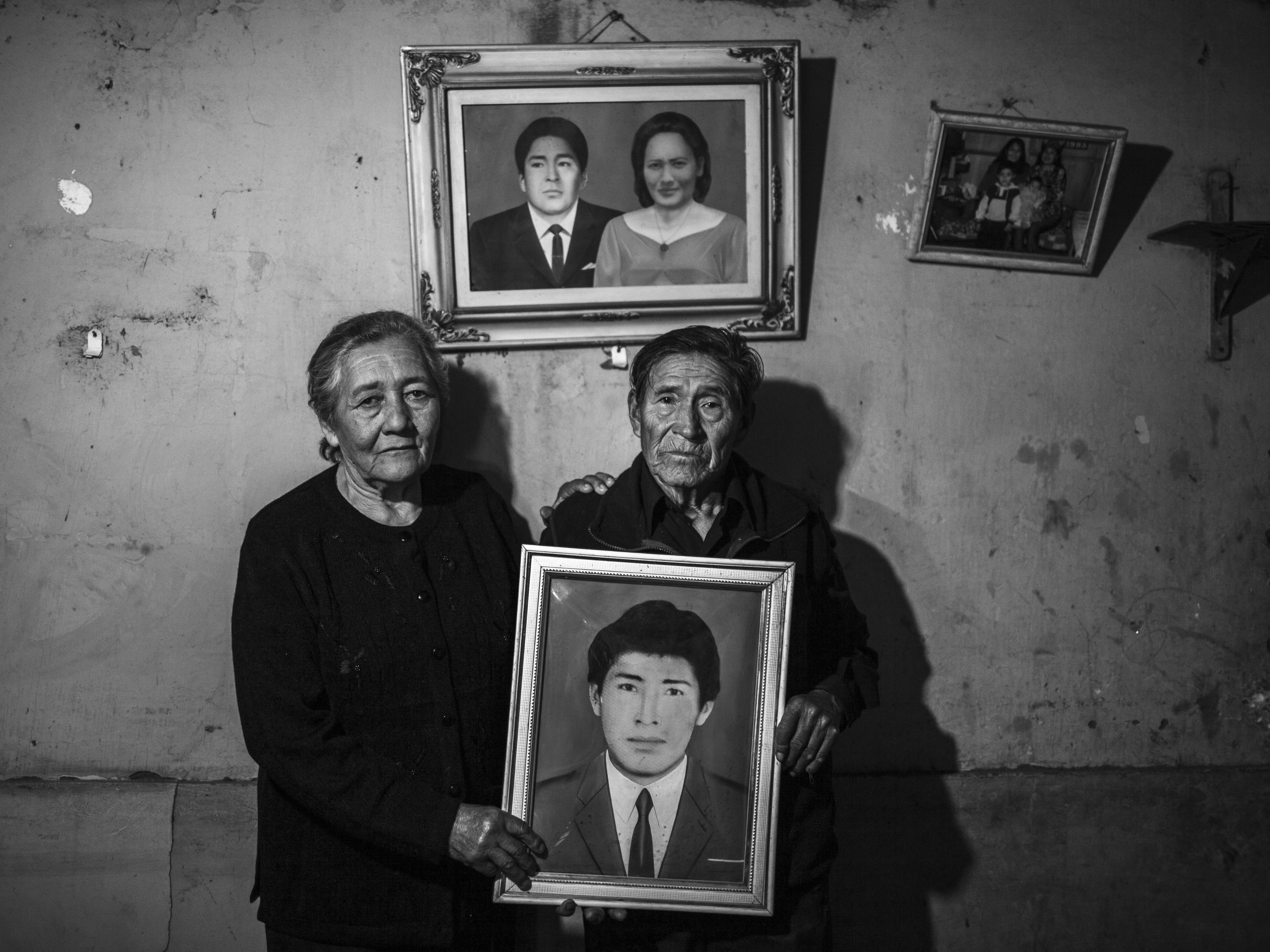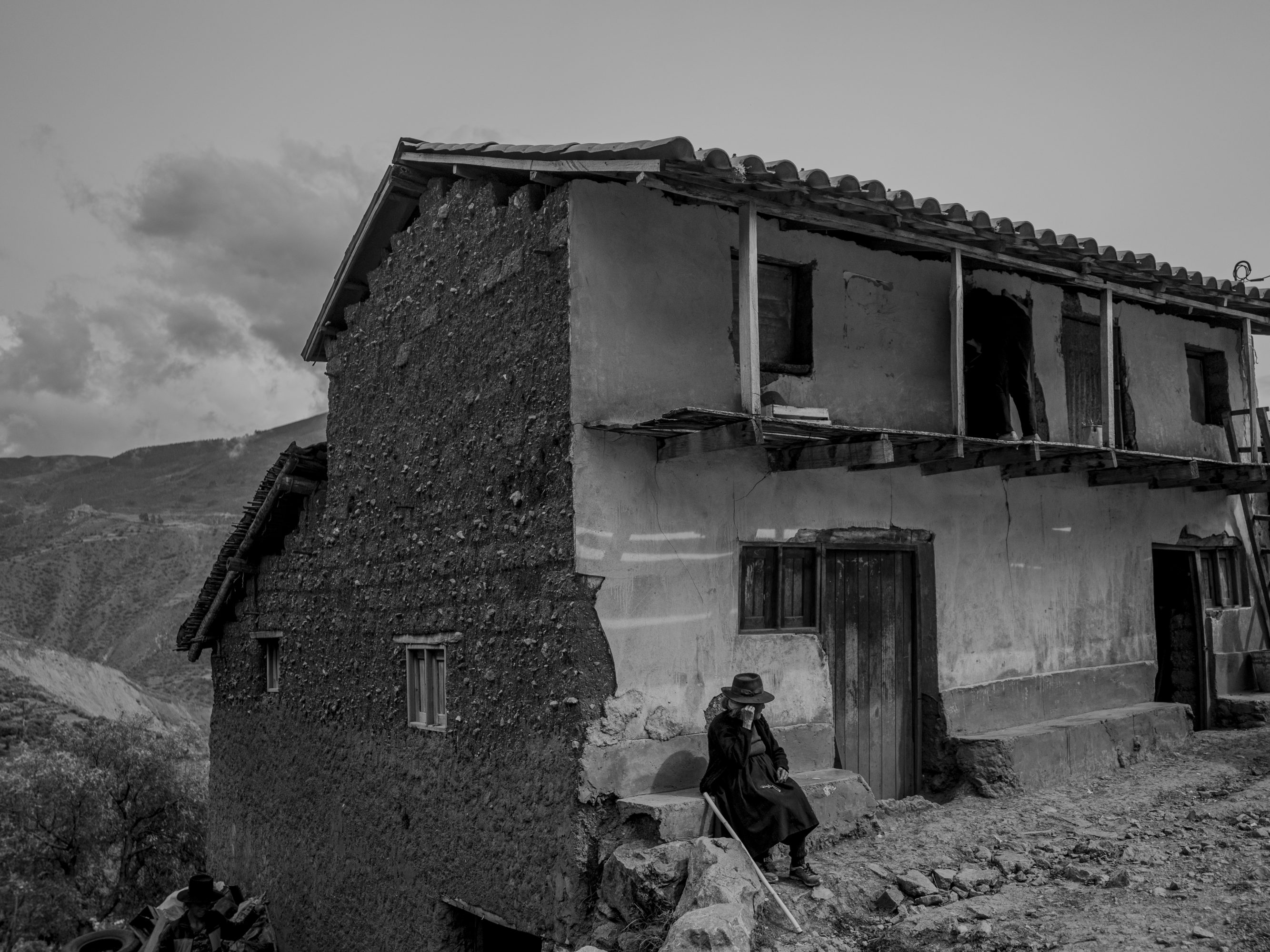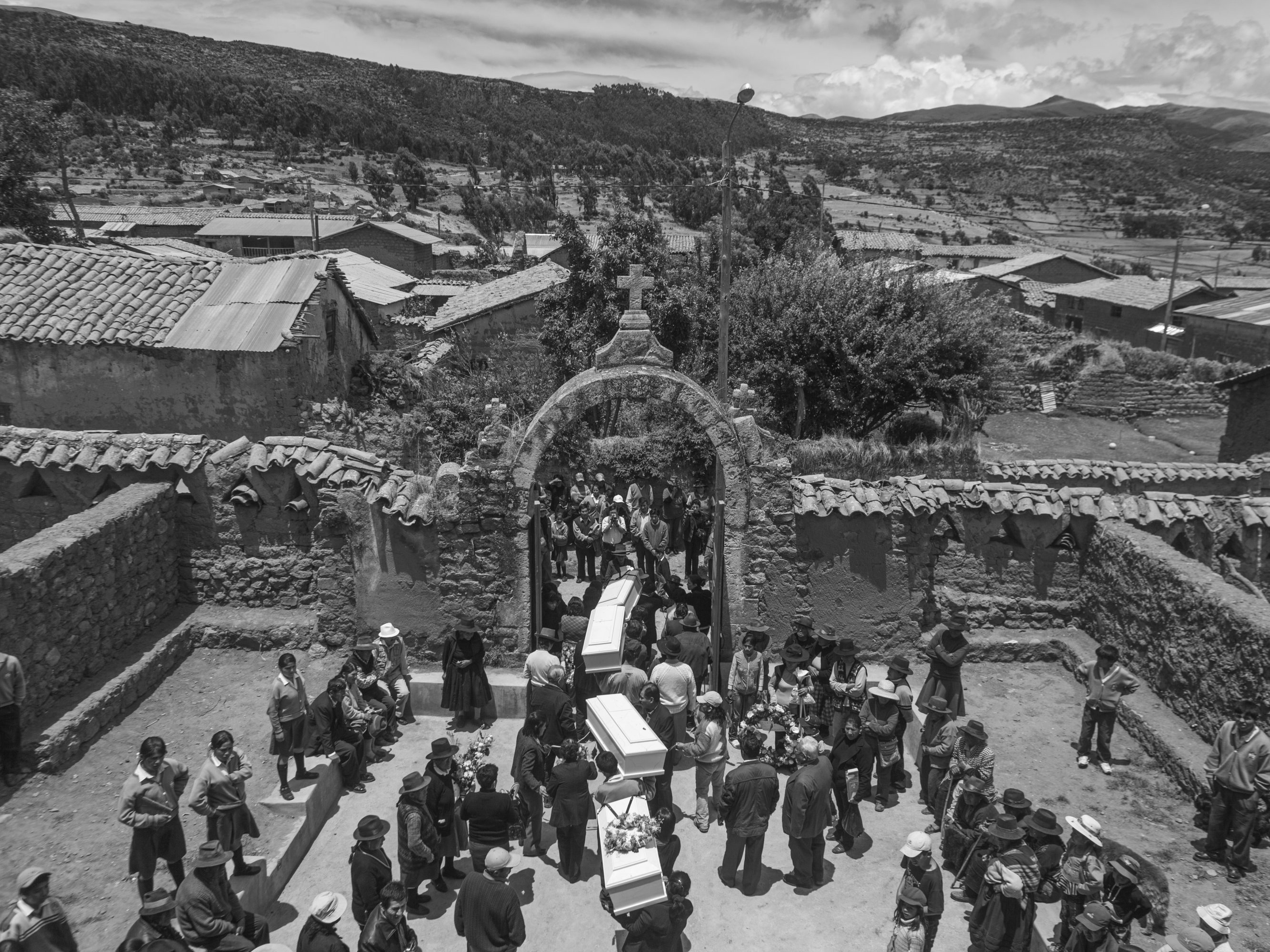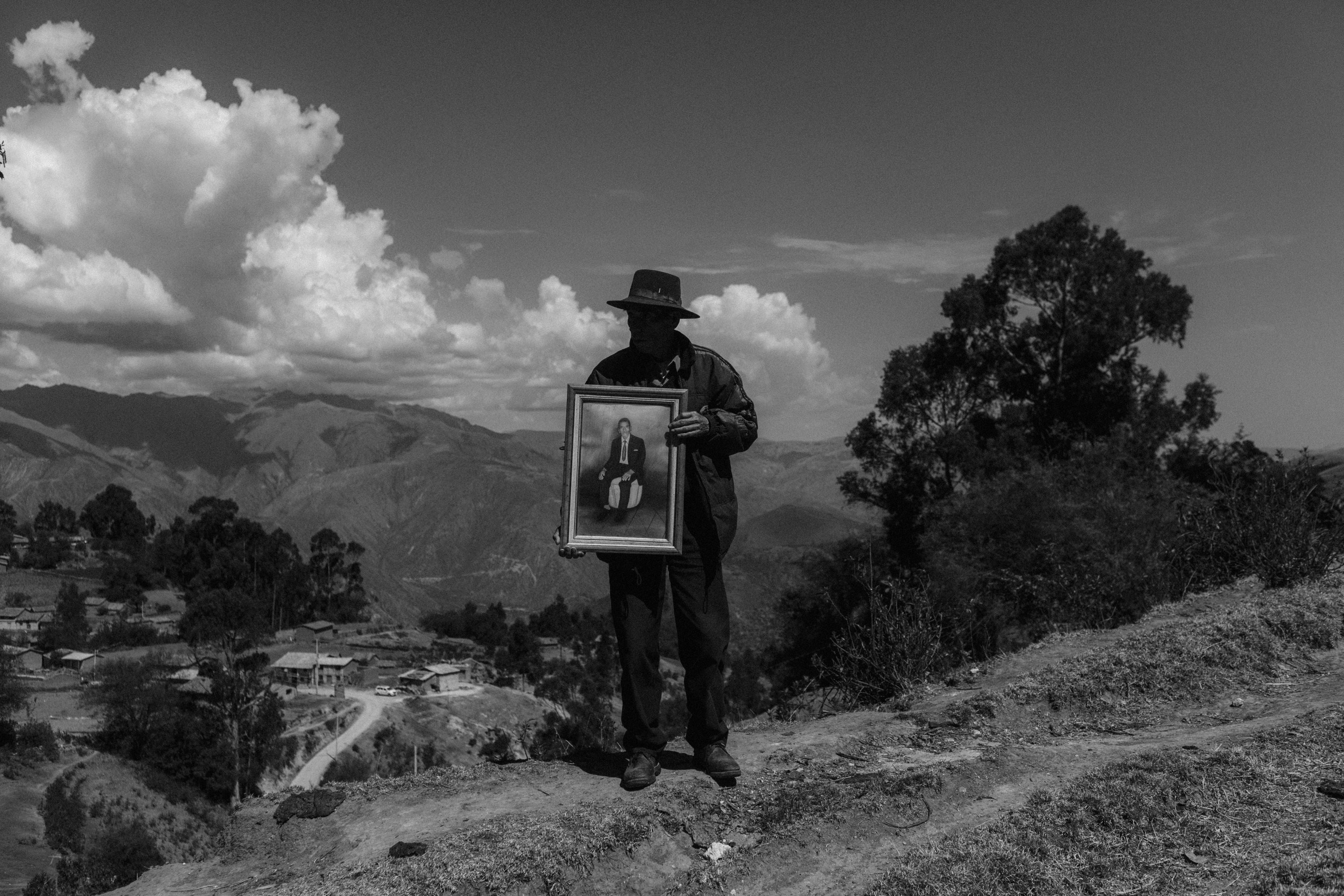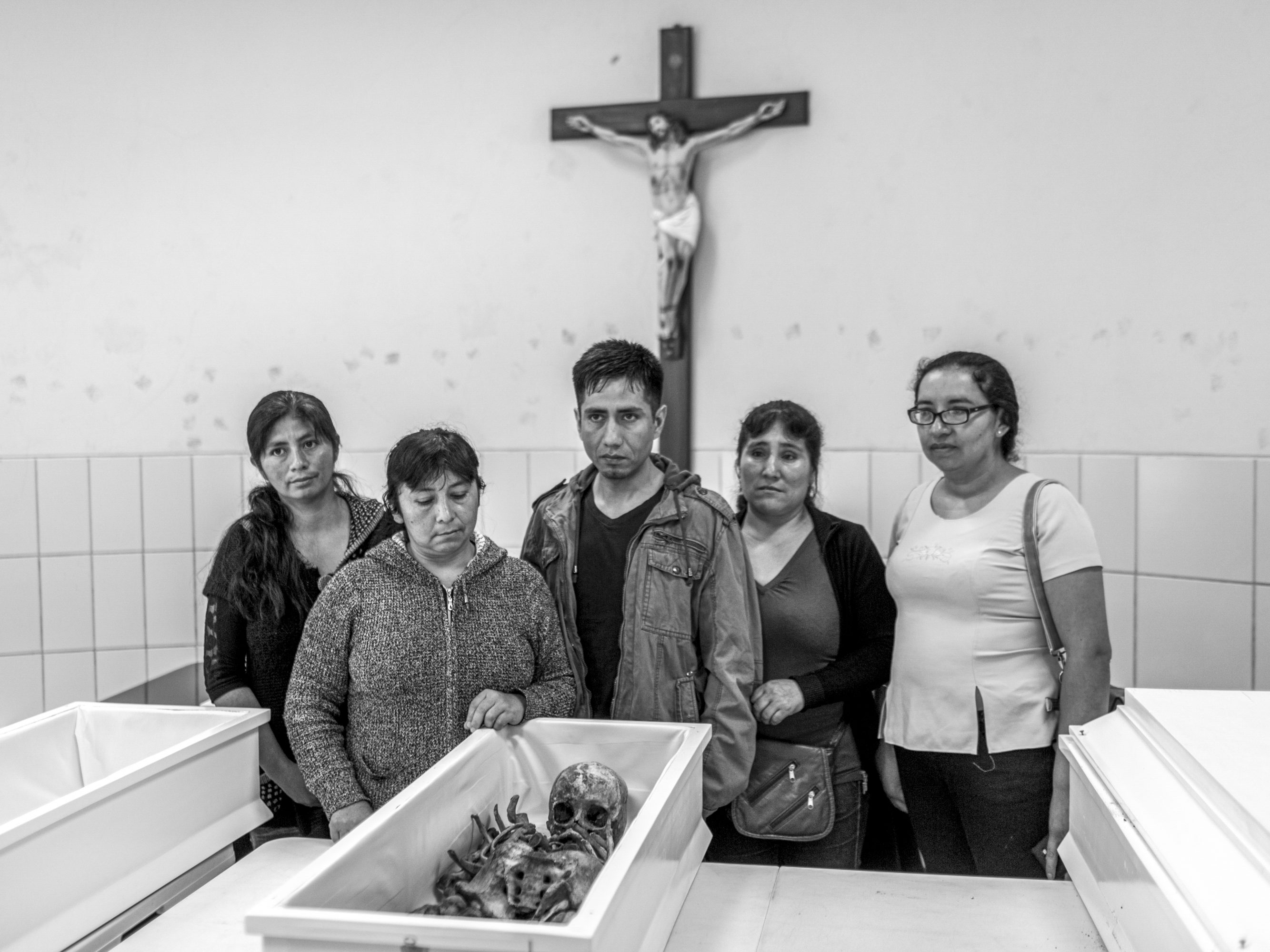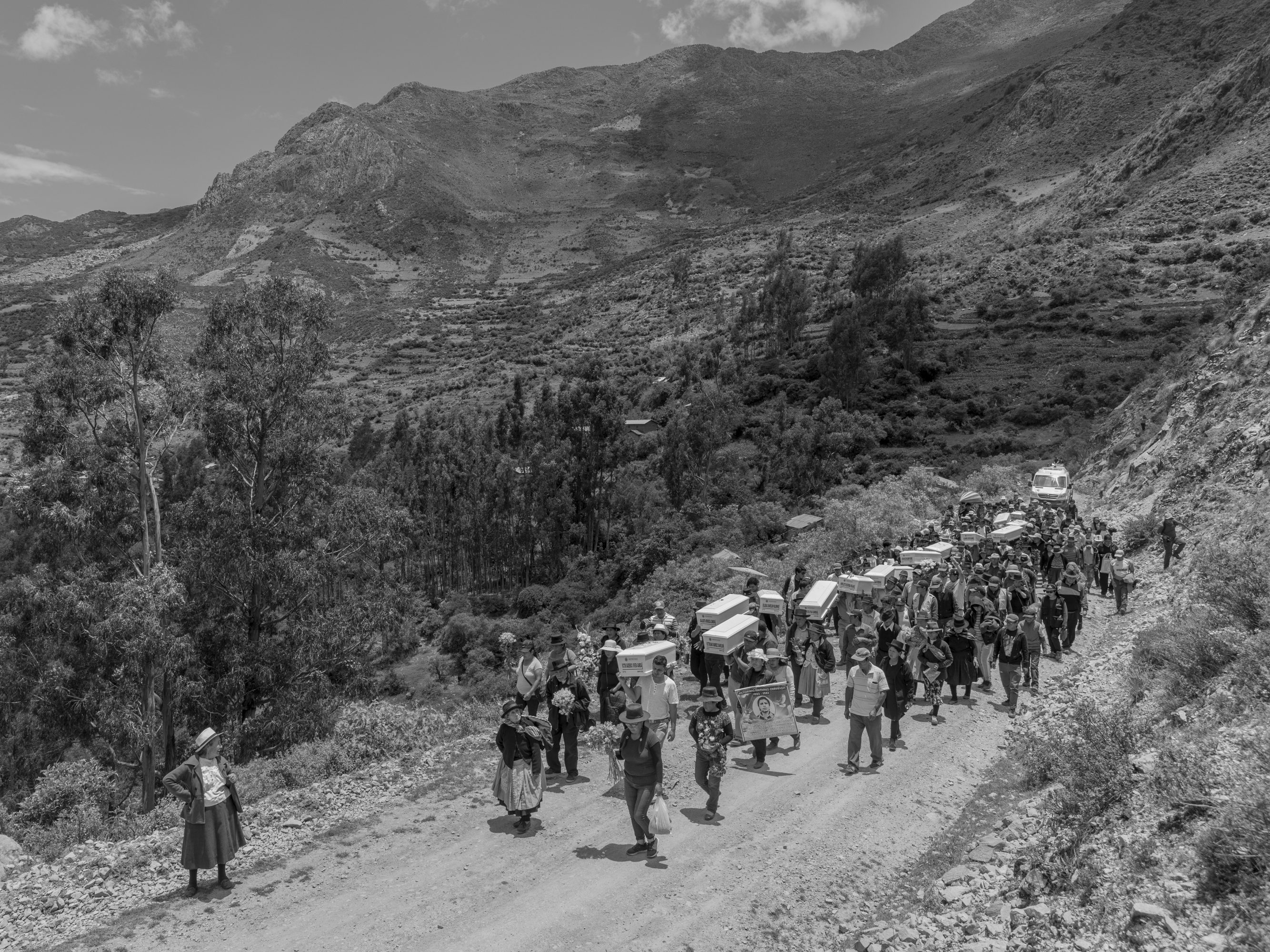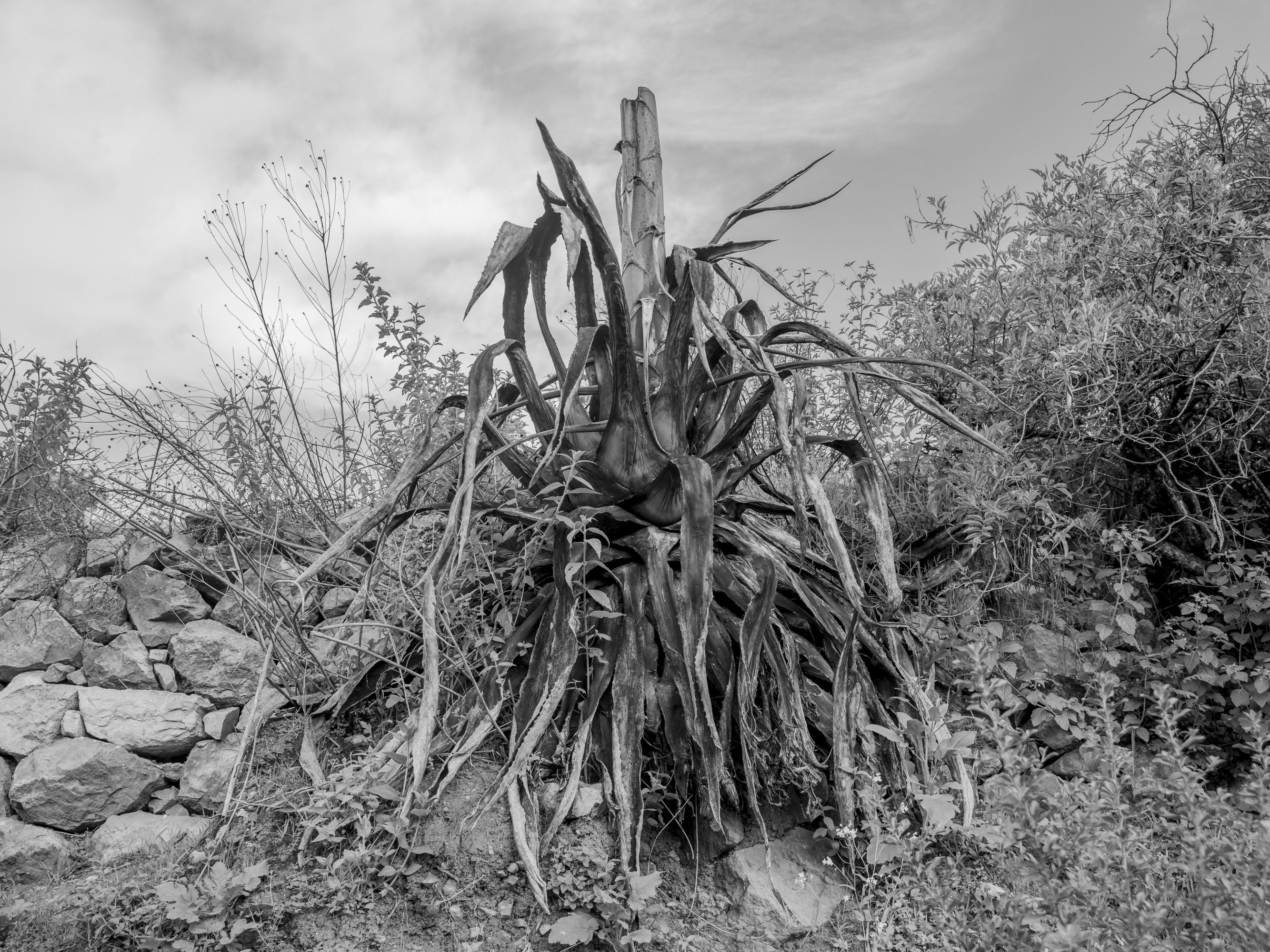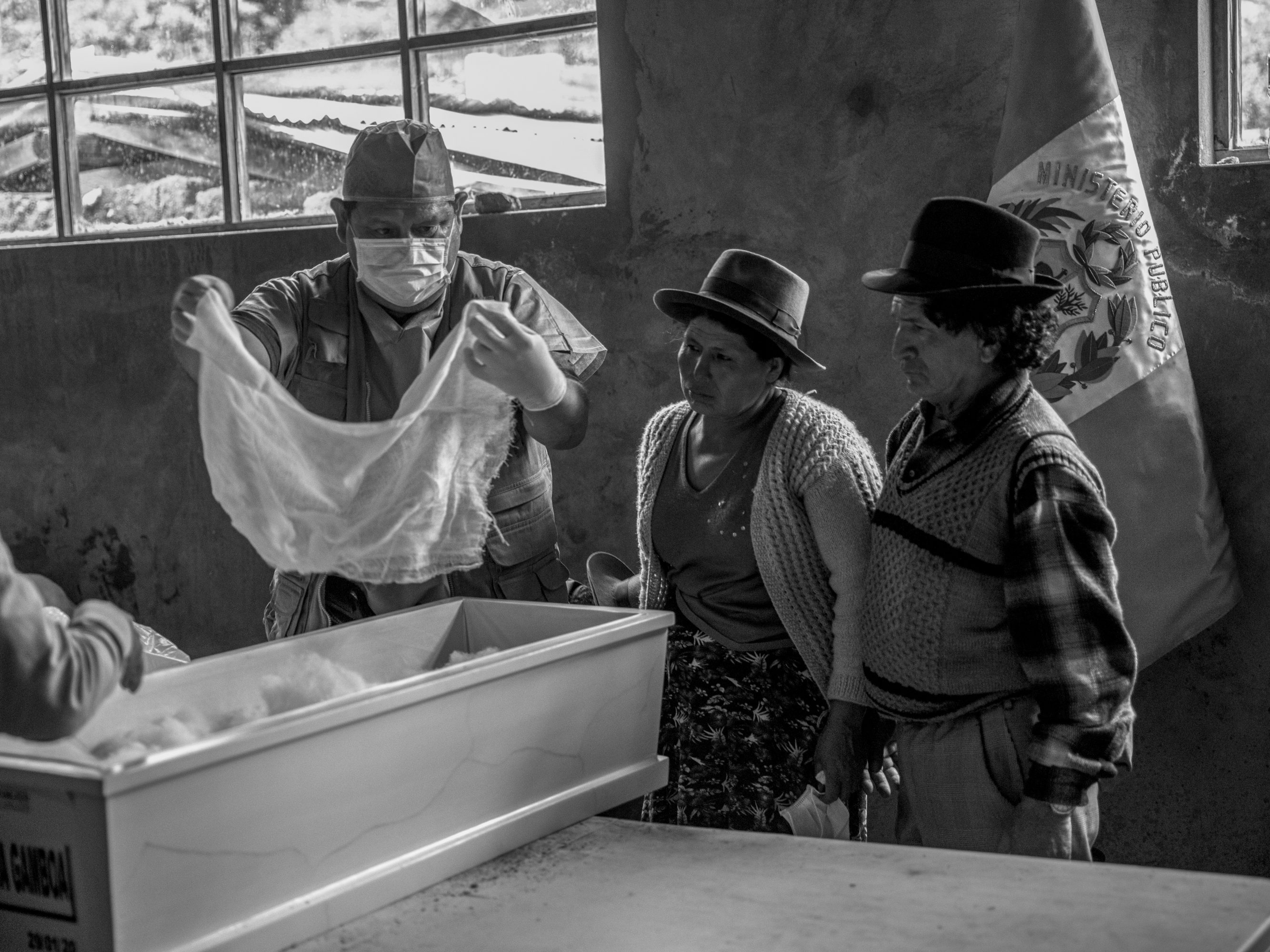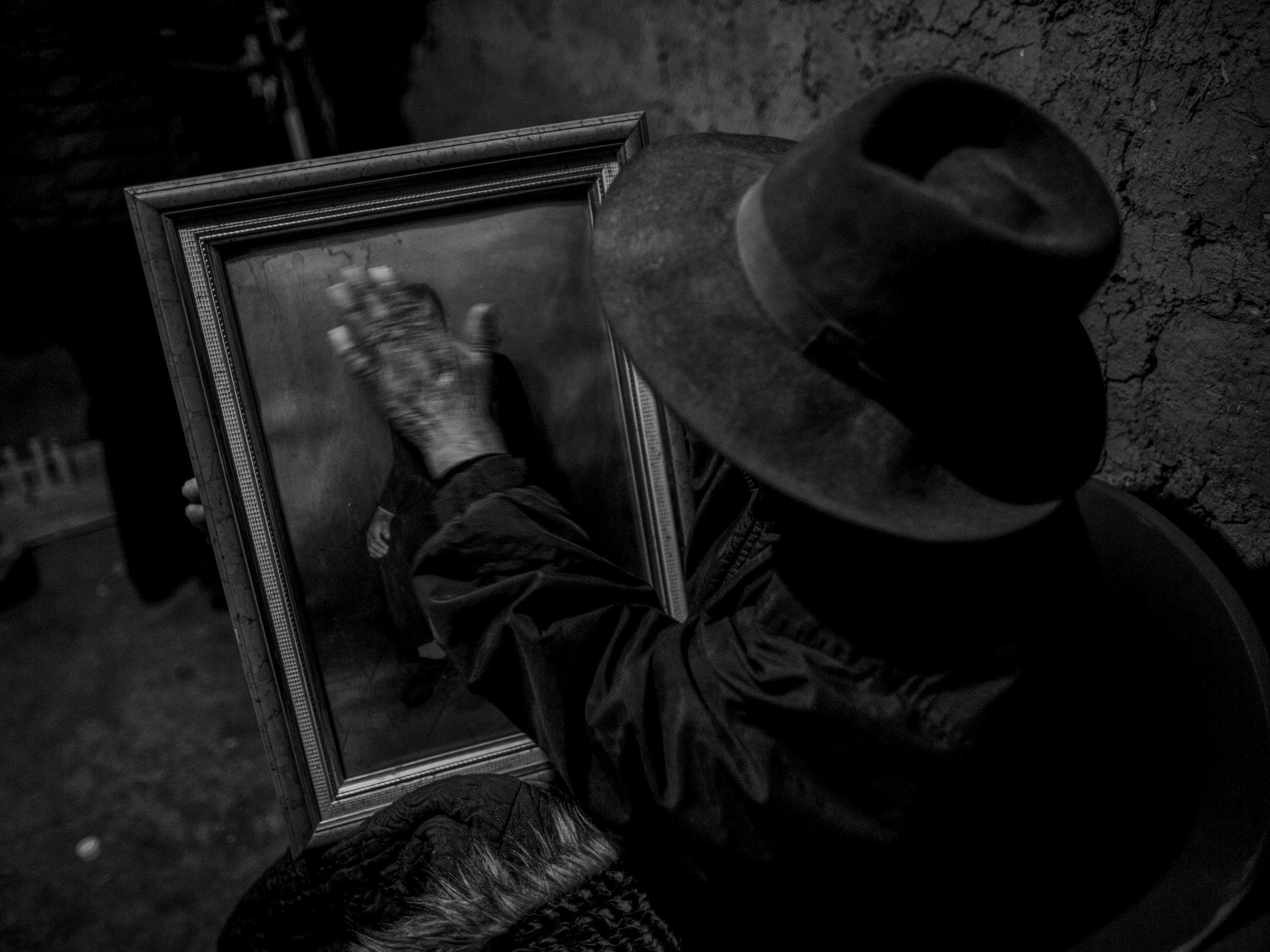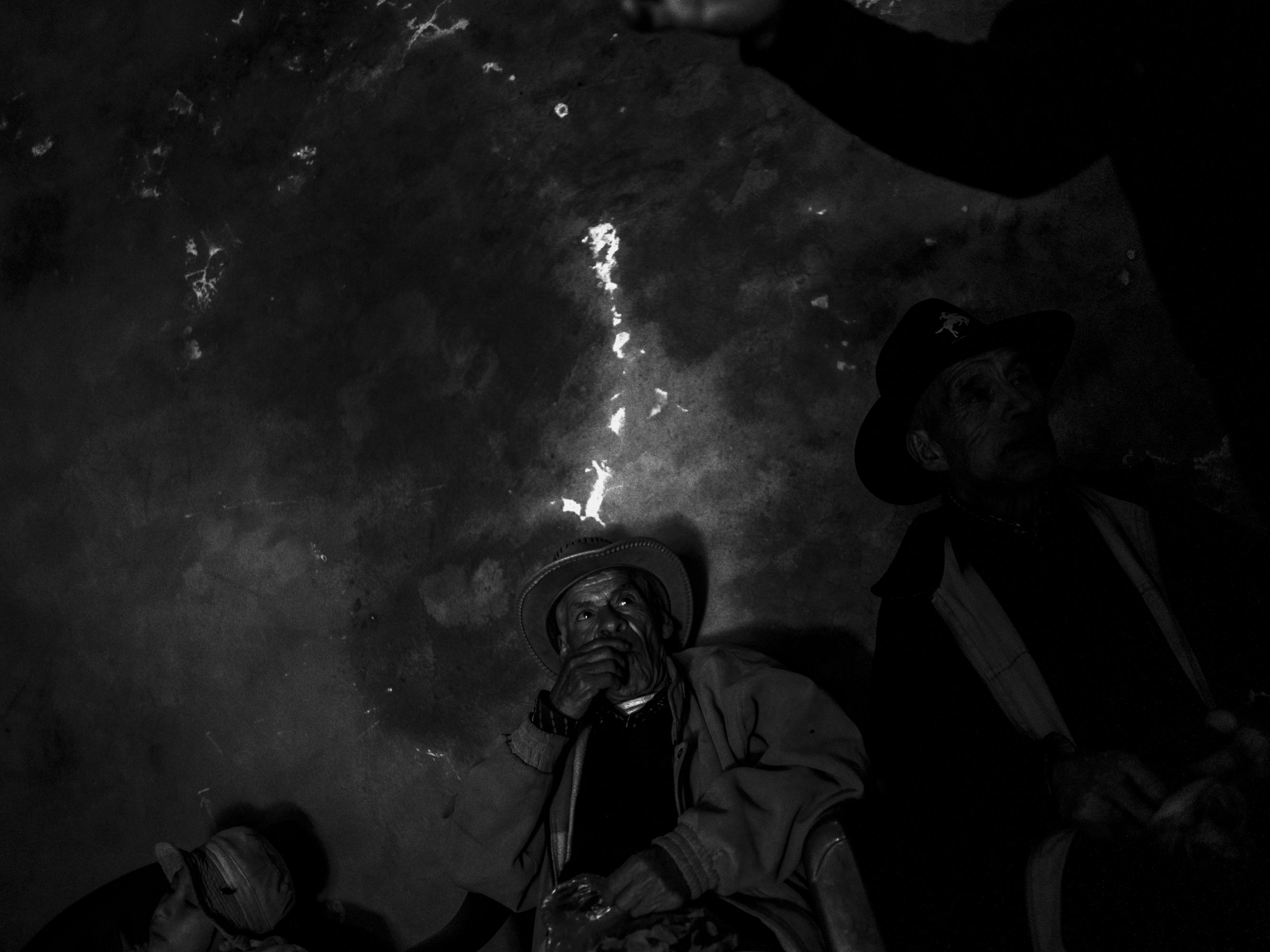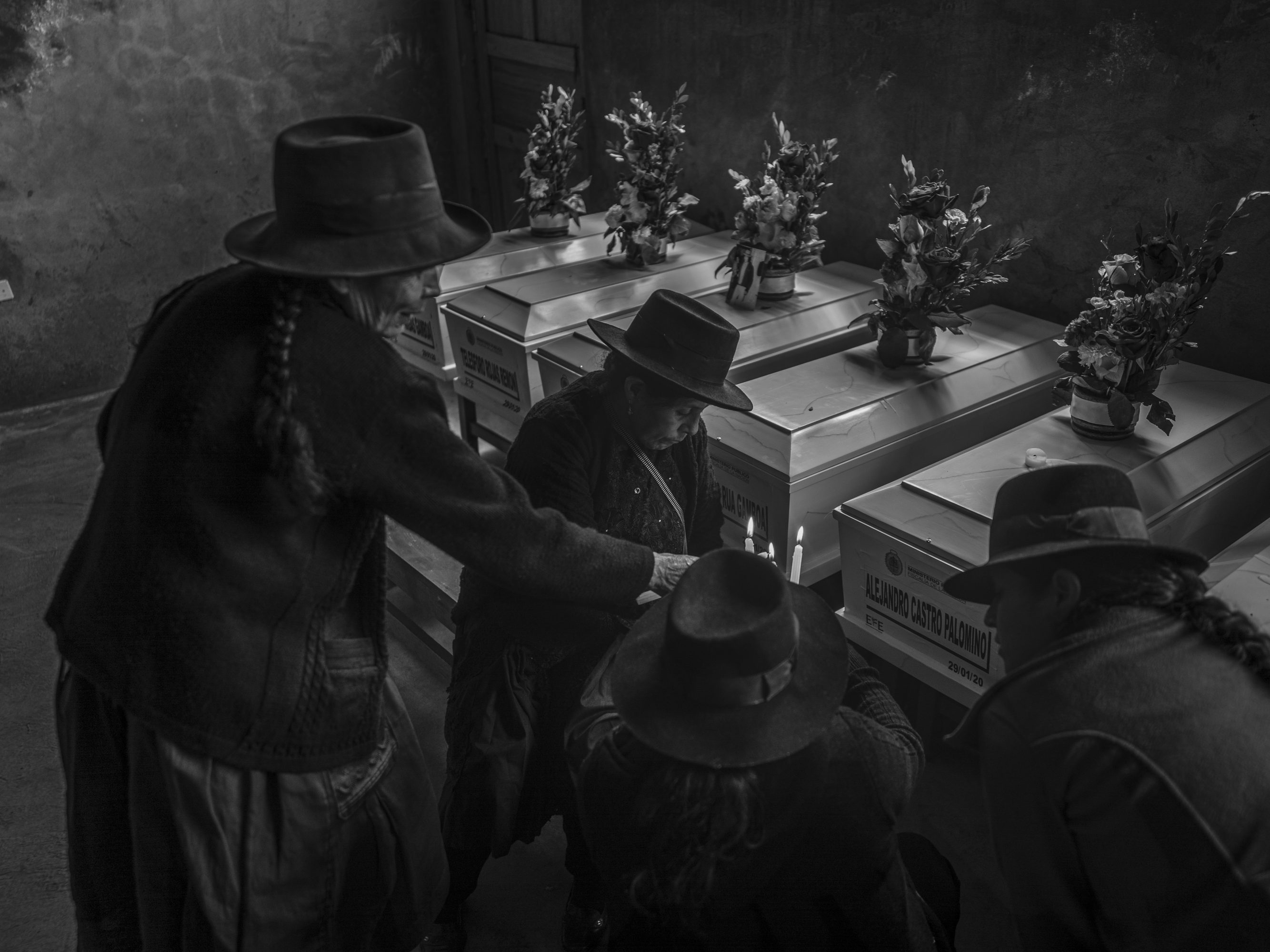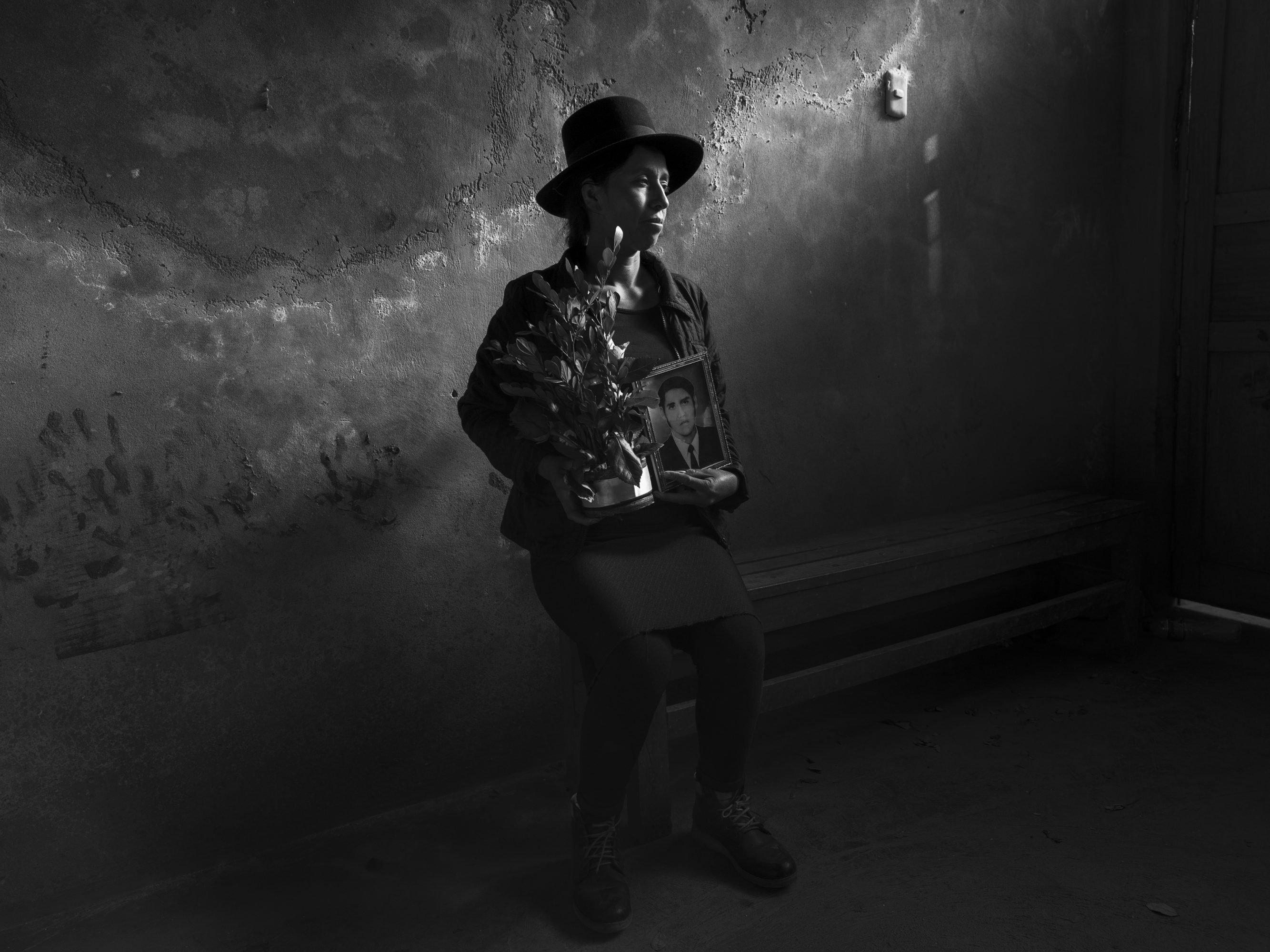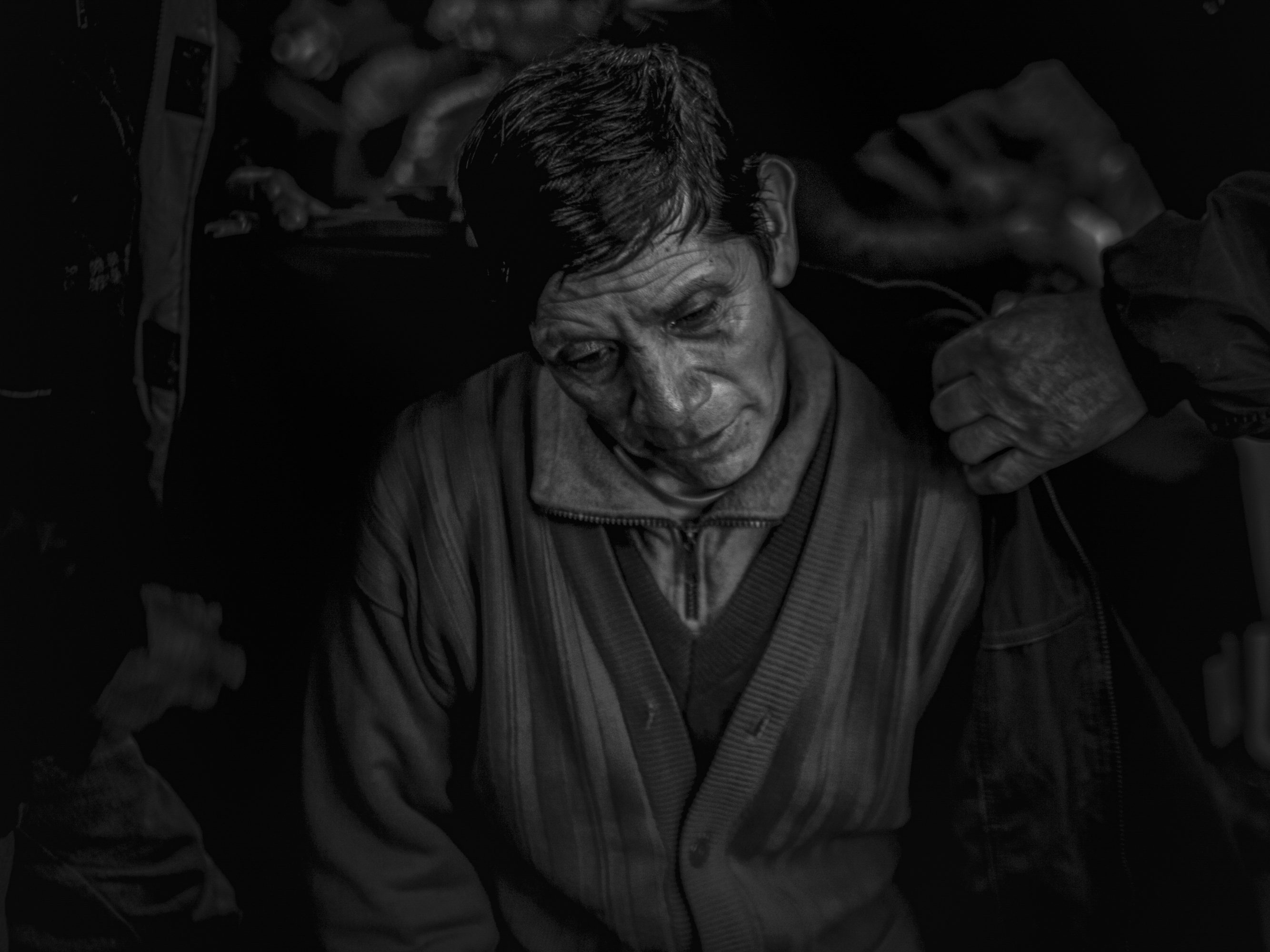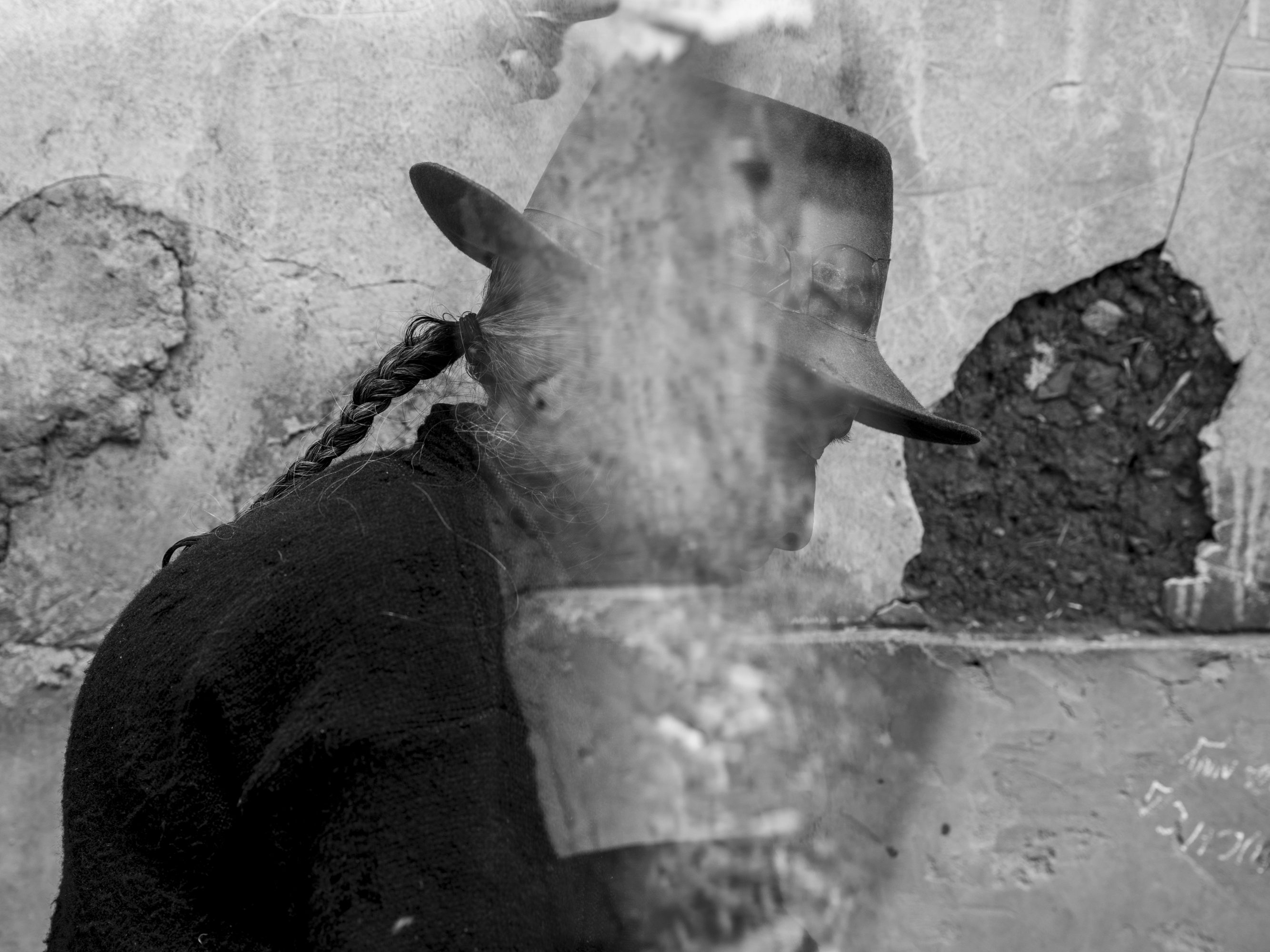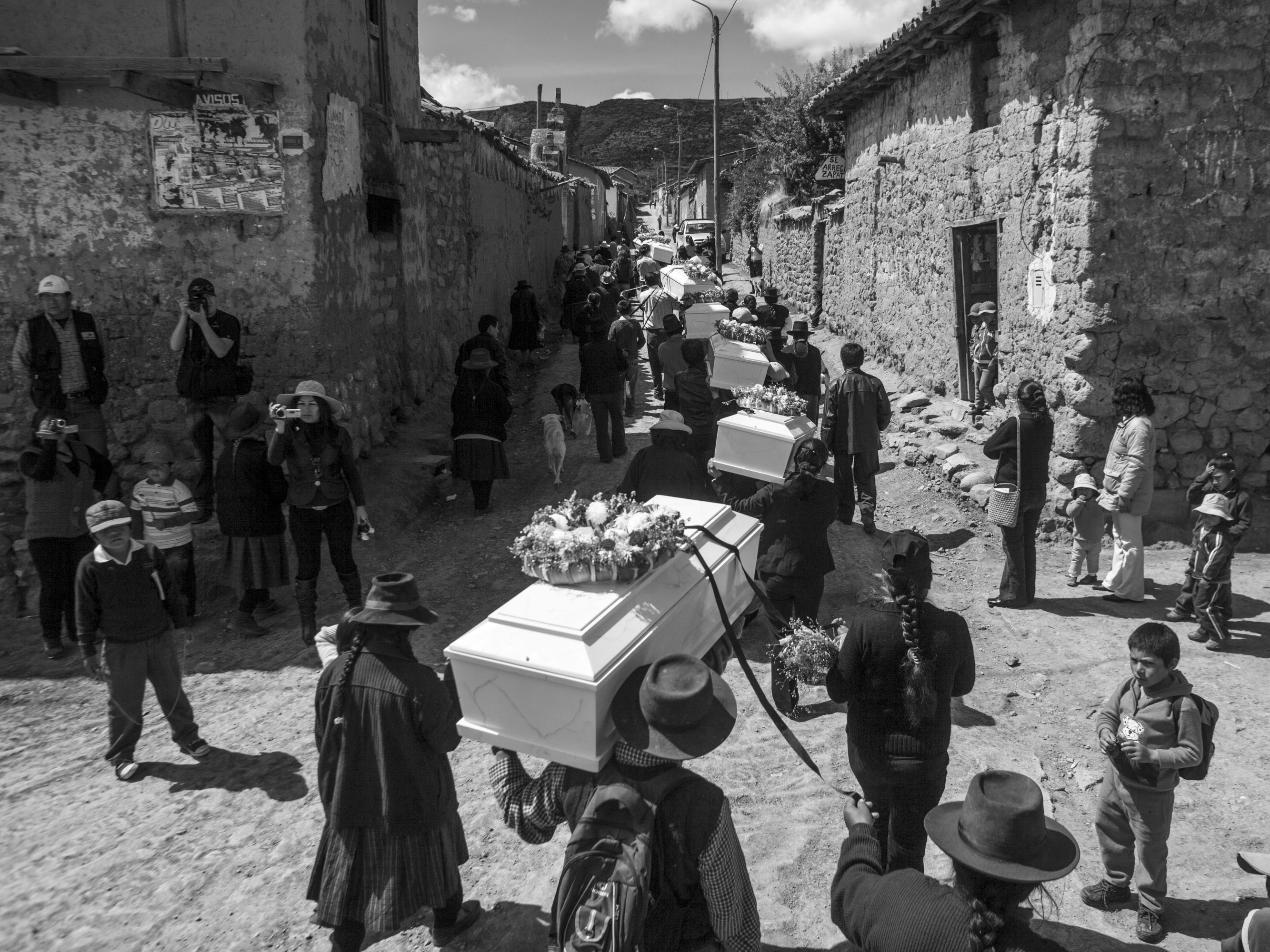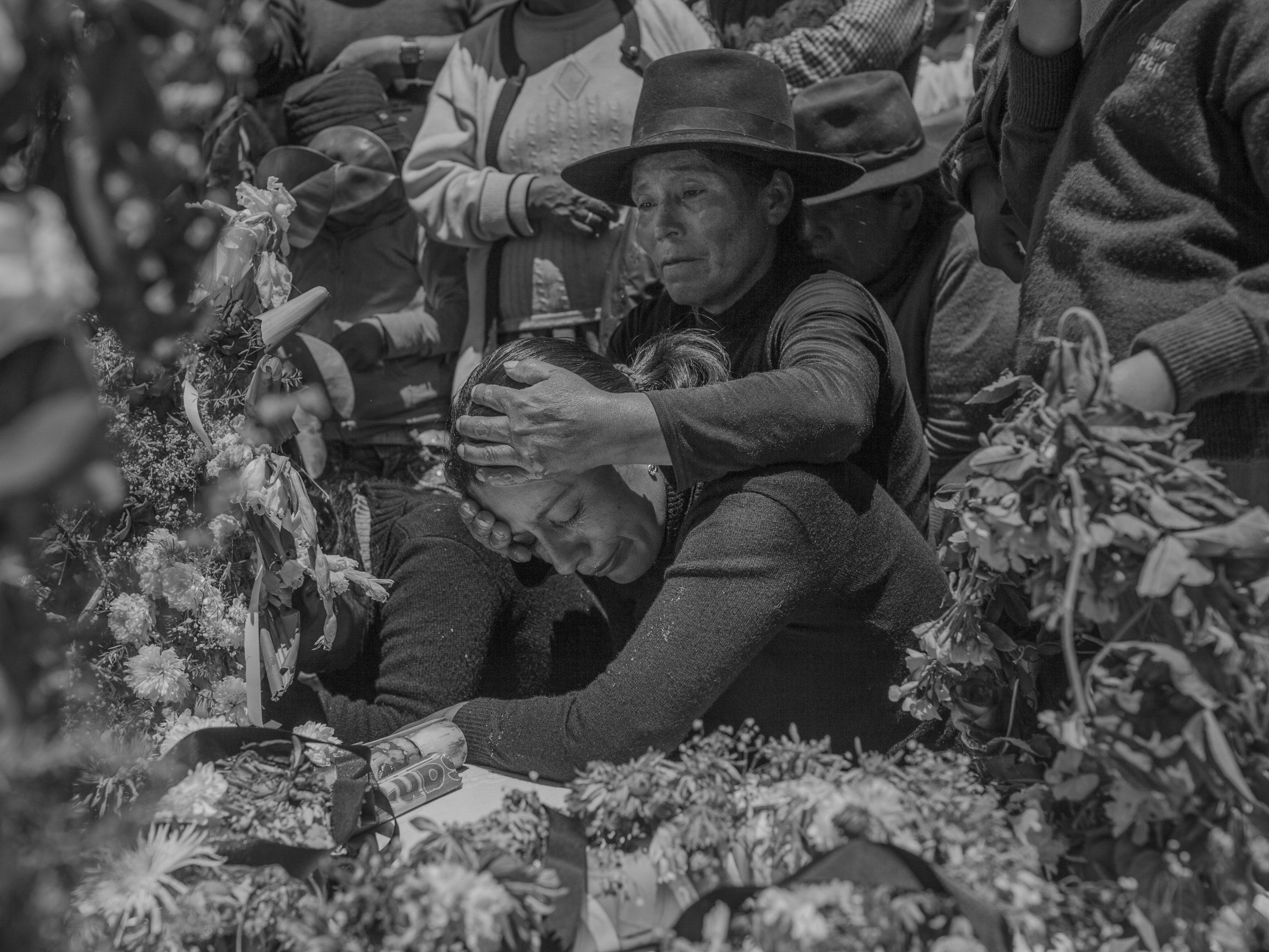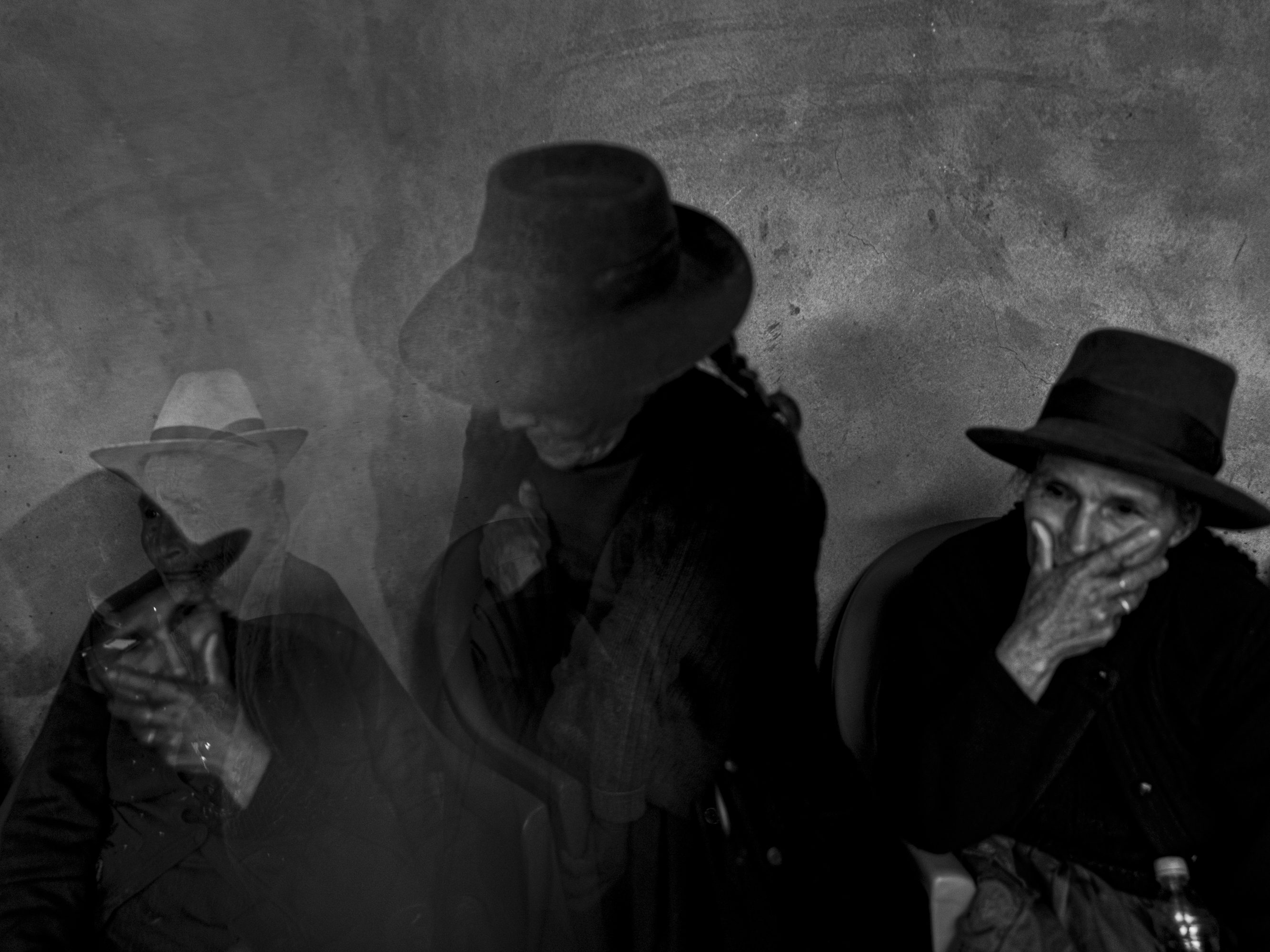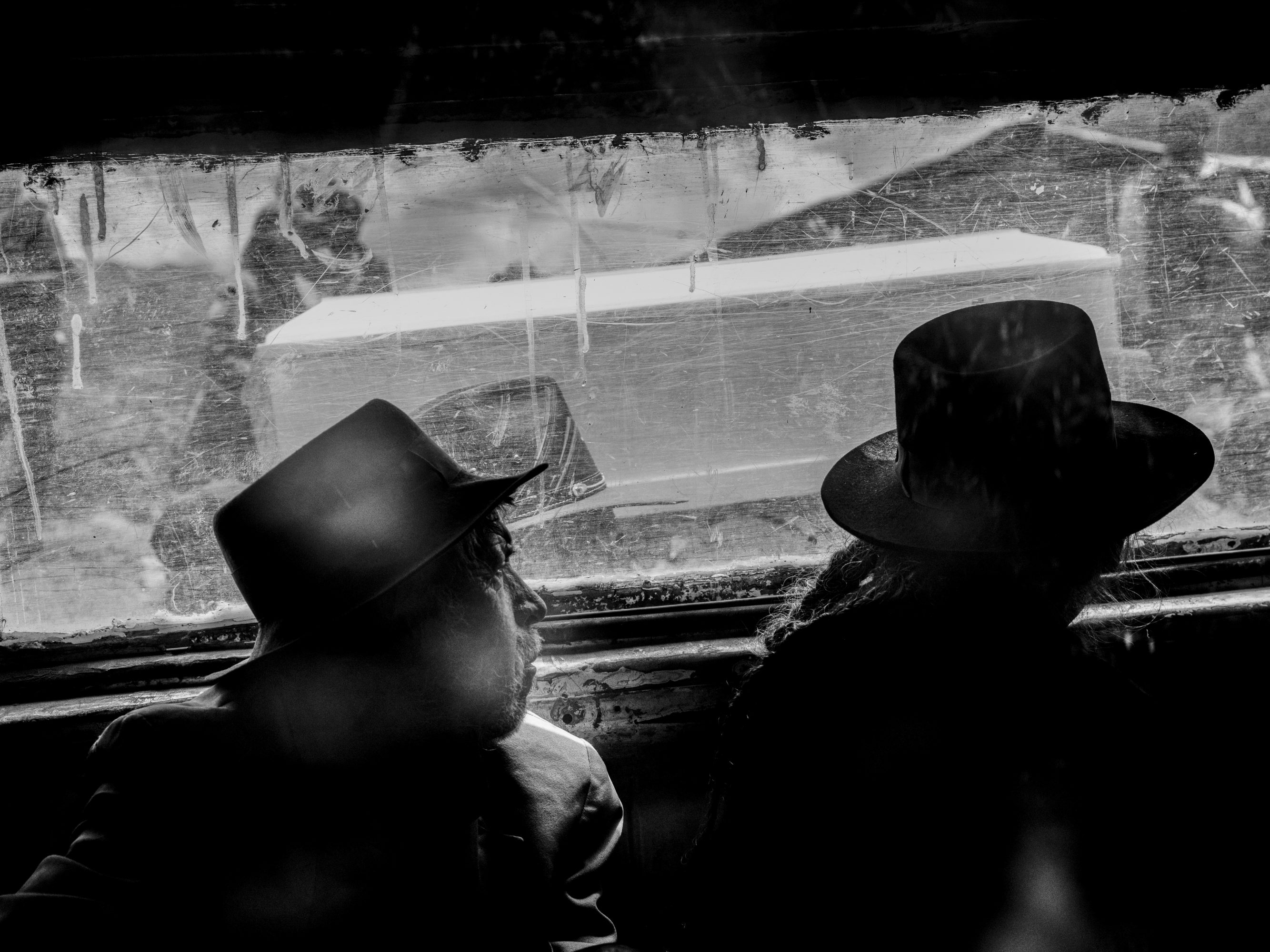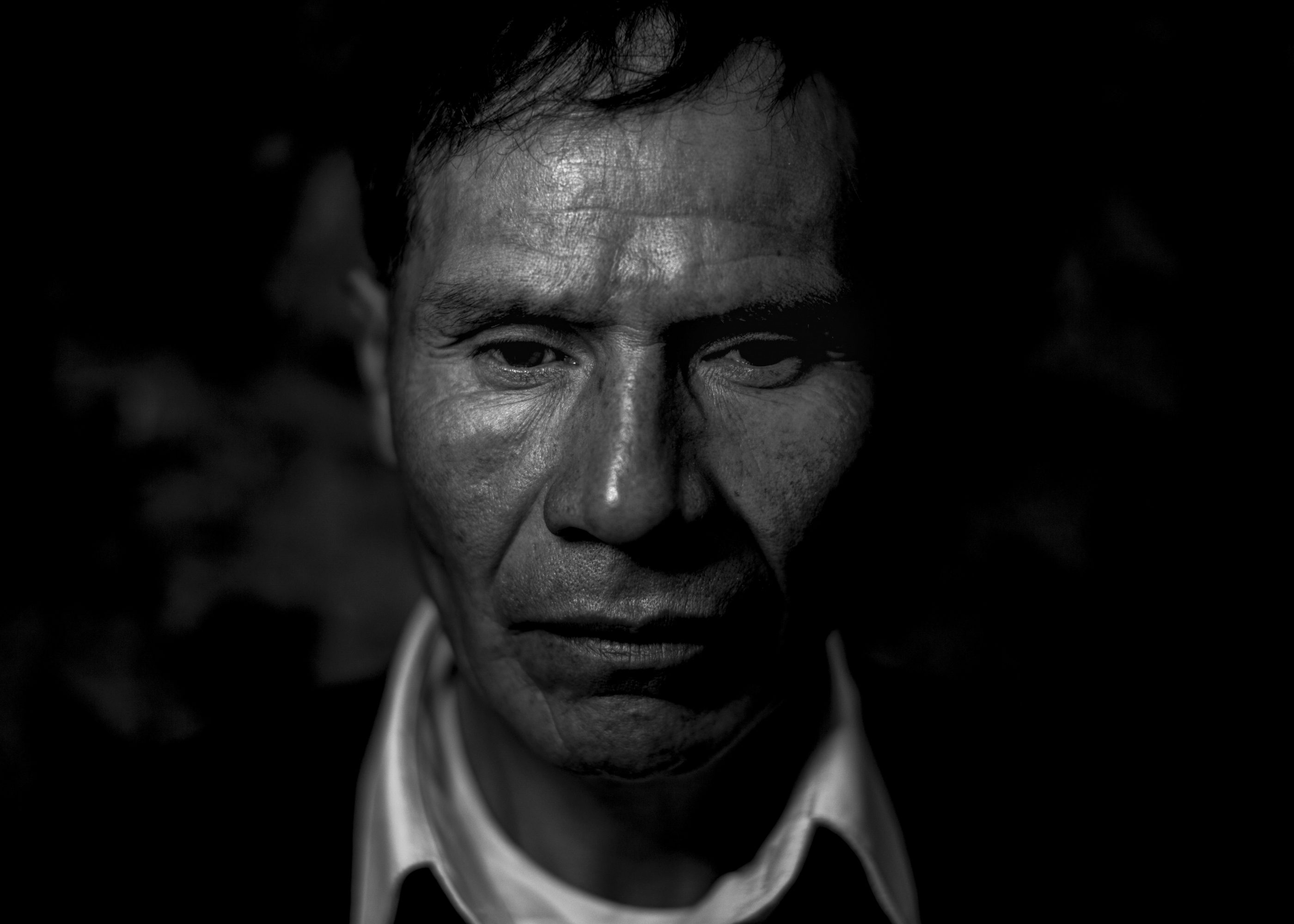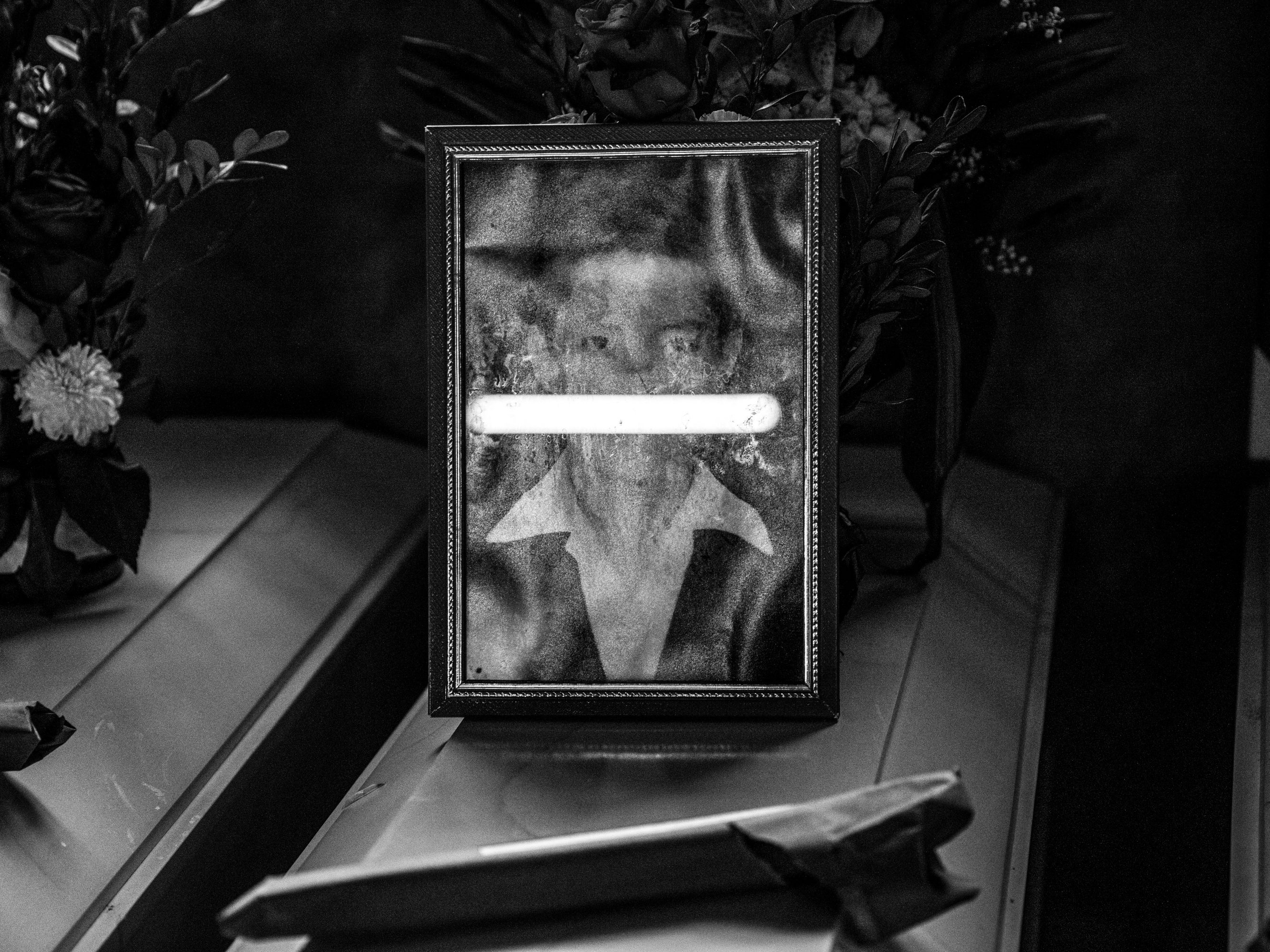Terrible atrocities were committed in Peru between 1980 and 2000 during the conflict between Sendero Luminoso (Shining Path), a Maoist guerilla group, and Peruvian government forces who would think nothing of massacring whole villages in their hunt for members of the group or their rivals the Tupac Amaru Revolutionary movement. Caught between the two, and often deliberately targeted, were indigenous villagers and farmers in the furthest reaches of the country. By the end of the 1990s it is estimated there were 70,000 deaths with another 15,000 missing and thousands of of others who were tortured and raped.
In 2001 Peru's Truth and Reconciliation Commission (CVR) was set up to establish the truth about the violence of the previous two decades.
In 2006, three years after the CVR published its final report, a comprehensive law was approved to start the process of searching for the disappeared, making collective reparations to the relatives of those killed and returning the remains of deceased people found in mass graves to their families. In the case of towns like Puja, communities have waited for almost 40 years to go through this process as a final milestone in their mourning.
Diogenes Palomino Pizarro at his brother of Antonio Espinoza Palomino's wake in the house from where he was kidnapped 37 years earlier. In May 1983 members of Sendero Luminoso kidnapped more than twenty people in the town of Pujas, most of them young, and took them to meet another insurgency group, a three-day walk through the mountains of Ayacucho. Along the way, there was a confrontation with the army and the police. Eighteen people survived and were interrogated by the State forces. However, as they did not believe the kidnapping story, they were forced to dig a grave and were later executed near the Rio Blanco cemetery.In 2008, 25 bodies related to the case were exhumed, but the identification was left incomplete. It took 11 years for the bodies to be returned to their families, almost four decades after the events.
Alejandro Castillo and Rosa Chavez holding a picture of Castillo's son Denis, who was missing for more than 20 years after being kidnaped by a paramilitary group. In one of the most infamous cases of terrorist violence that occurred during the dictatorship of Alberto Fujimori, early in the morning of 2 May 1992, the 'Colina' paramilitary group kidnapped nine peasants from the Santa district. After almost 20 years, their remains were found and returned to their families. There are still 16,000 missing people related to terrorism in Peru between 1980 to 2000.
Antonio Espinoza's mother sits at her son's wake in what was his home until he was kidnapped and then murdered by the Sendero Luminoso in 1985. After 37 years, Antonio's remains were returned to the house to be watched over by his family.
This year marks the 20th anniversary of the Truth Commission's report. This project tries to establish a space to listen to the victims, establish the causes that led to the crisis and to recommend retribution and justice for those affected. Over the years, this vital report has frequently been attacked with the intention of de-legitimising its findings and its importance. Given the context, this anniversary marks an important moment for those whom have been documenting this process of mourning and memory.
The remains of 17 missing persons are taken to the cemetery after a funeral Mass at the community church in Soras. On 16 July 1984, a local bus was on its usual route towards Soras. In the vehicle were 40 members of the left wing terrorist group Sendero Luminoso. The bus stopped in the towns of Chaupishuasi, Doce Corral and Soras. During these stops, the guerrillas murdered over one hundred people who refused to join their ranks. The massacre became known as 'The Death Express' and over 27 years later, the remains of 17 of those killed were finally put to rest in the Soras cemetery.
A man holds a portrait of Claudio Morales, President of the Ocros community, who was killed by the terrorist group Sendero Luminoso in Ayacucho, in 1984. On 17 January 1984, at around 4am, a squad from the terrorist group Sendero Luminoso ( Shinning Path ) entered the house of the Morales family while they slept. Without a known motive, they killed the four adults, Claudio Morales, Lucila Morales, Victor Morales and Catalina Limaco. Victor and Catalina had five children, aged between one and 12 years old, who witnessed the murders and lived with the bodies for four days due to the isolation of their home.
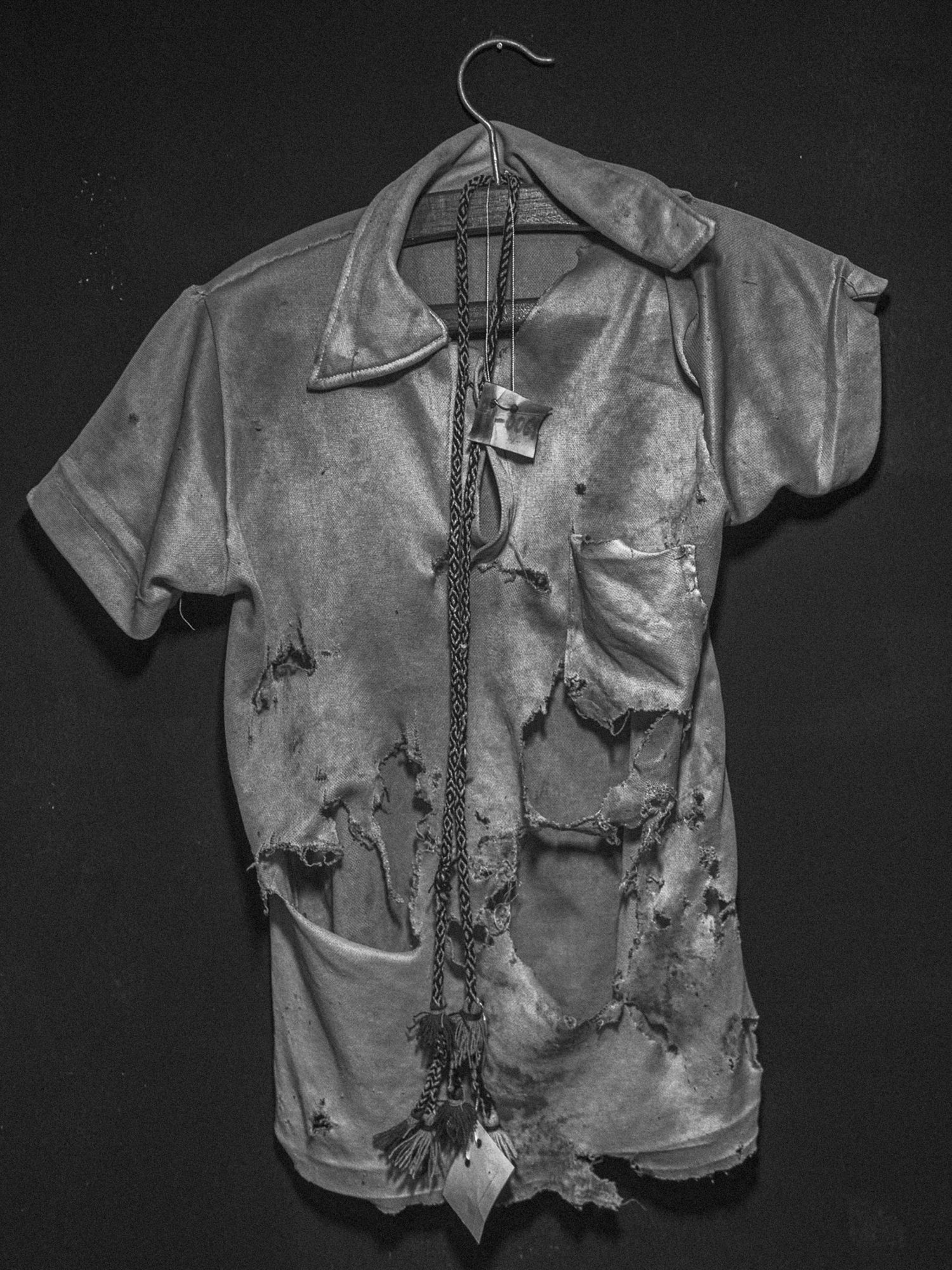
The remains of clothing from a disappeared person on display in the Museum of Memory of ANFASEP (National Association of Relatives of Kidnapped, Detained and Missing Persons of Peru).
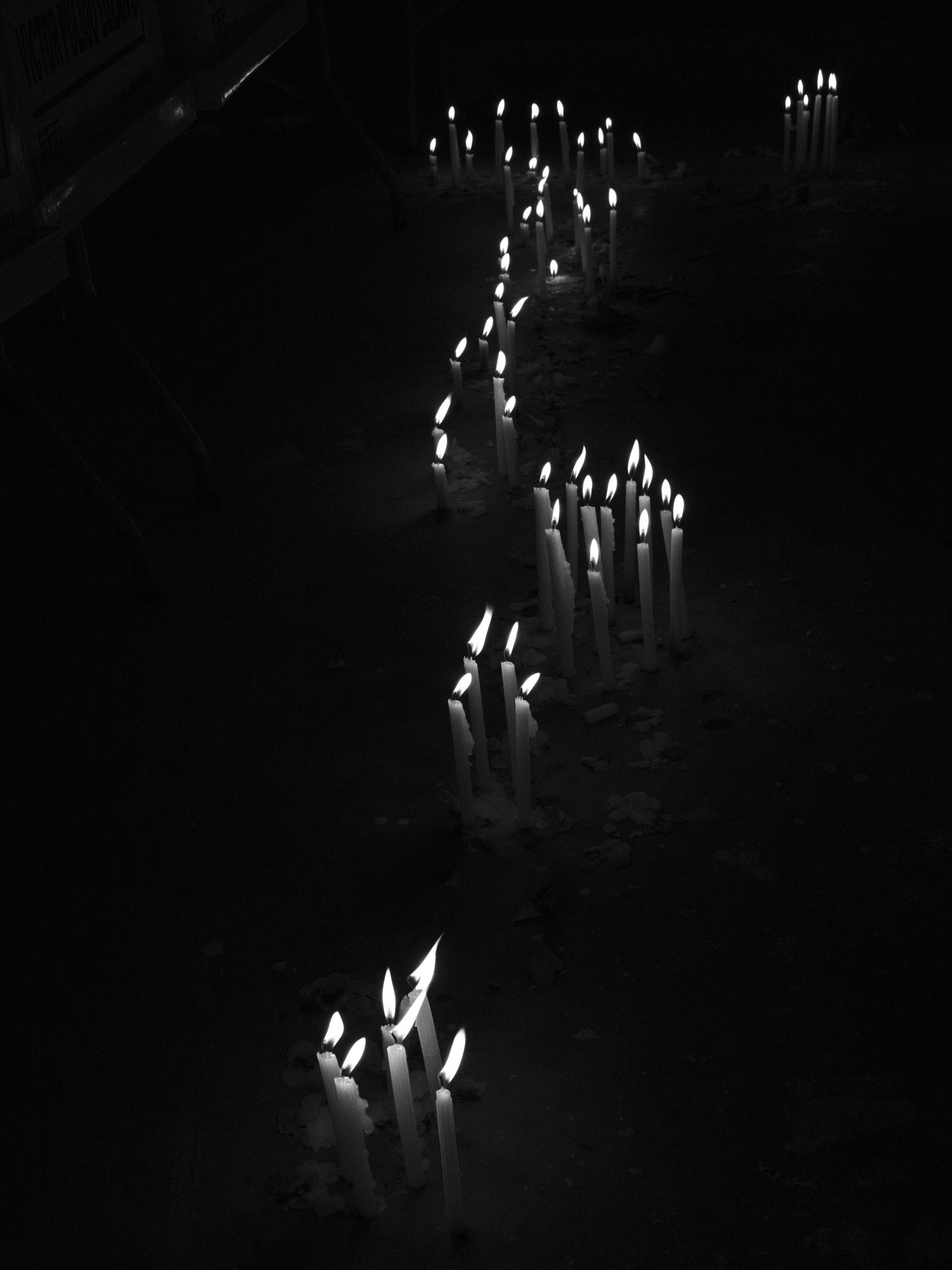
Burning candles at a mass wake for more than 100 victims of the Accomarca massacre. On 14 August 1985, a military patrol under the command of Telmo Hurtado killed almost all the residents of the town of Accomarca, alleging that they were members of the Sendero Luminoso ( The Shining Path ) terrorist group. Hurtado, nicknamed 'the butcher of the Andes', is now in prison after being extradited from the United States where he lived.
Relatives of Catalina Limaco Cisneros pose for the official judiciary registry photo during the return of the remains of four members of the Morales family, who were murdered by the terrorist group Sendero Luminoso in 1984. On 17 January 1984, at around 4am, a squad from Sendero Luminoso entered the house of the Morales family while they slept. Without a known motive, they killed the four adults, Claudio Morales, Lucila Morales, Victor Morales and Catalina Limaco. Victor and Catalina had five children, aged between one and 12 years old, who witnessed the murders and lived with the bodies for four days due to the isolation of their home.
37 years after their disappearance, and 11 years after their bodies were exhumed, residents from the town of Pujas accompany the remains of their friends and relatives murdered and disappeared during Peru's insurgency of the 1980s/90s to the town cemetery for their burial.
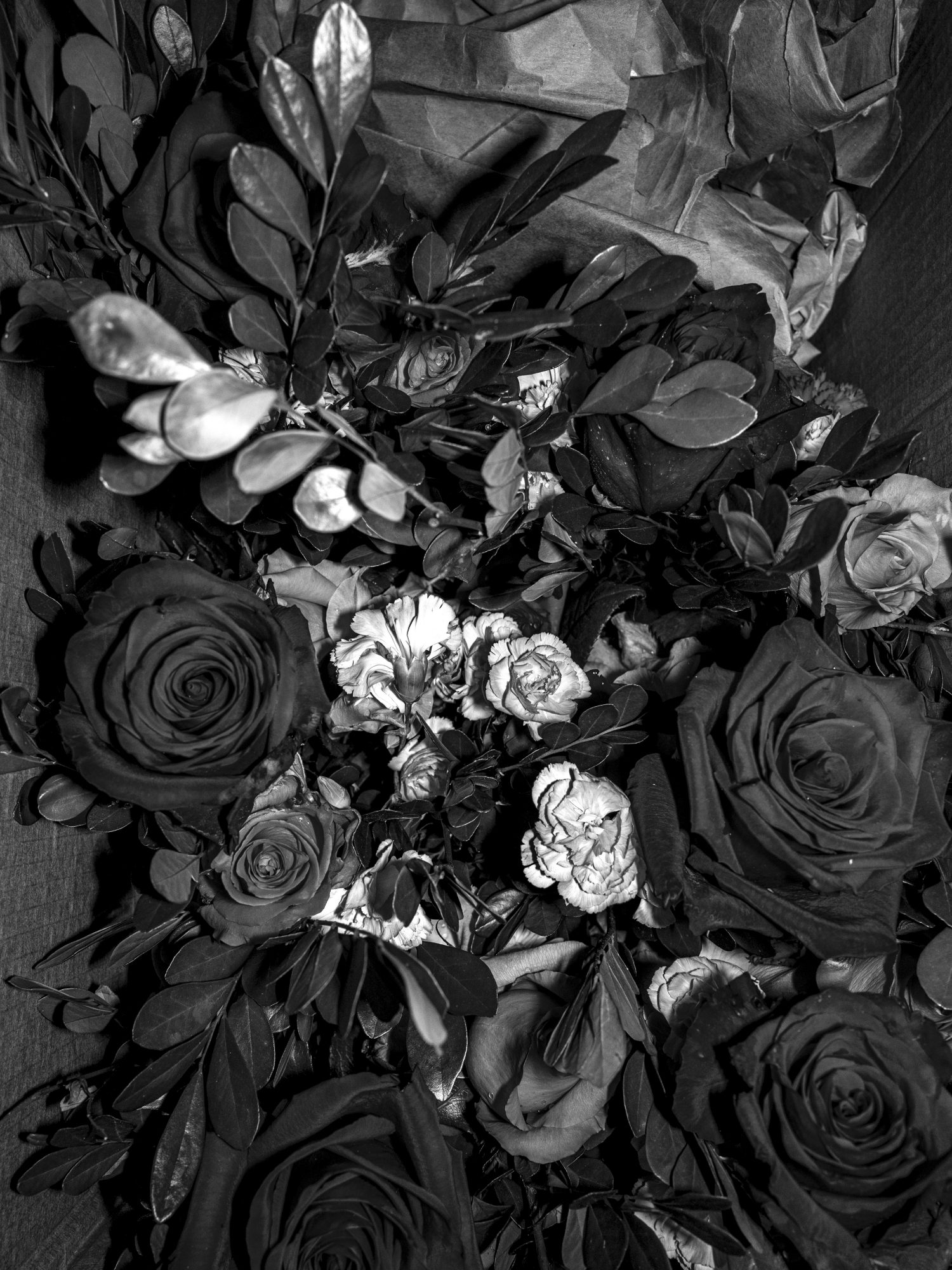
A flower arrangement in Pujas placed at the wake of the bodies from the Rio Blanco case.
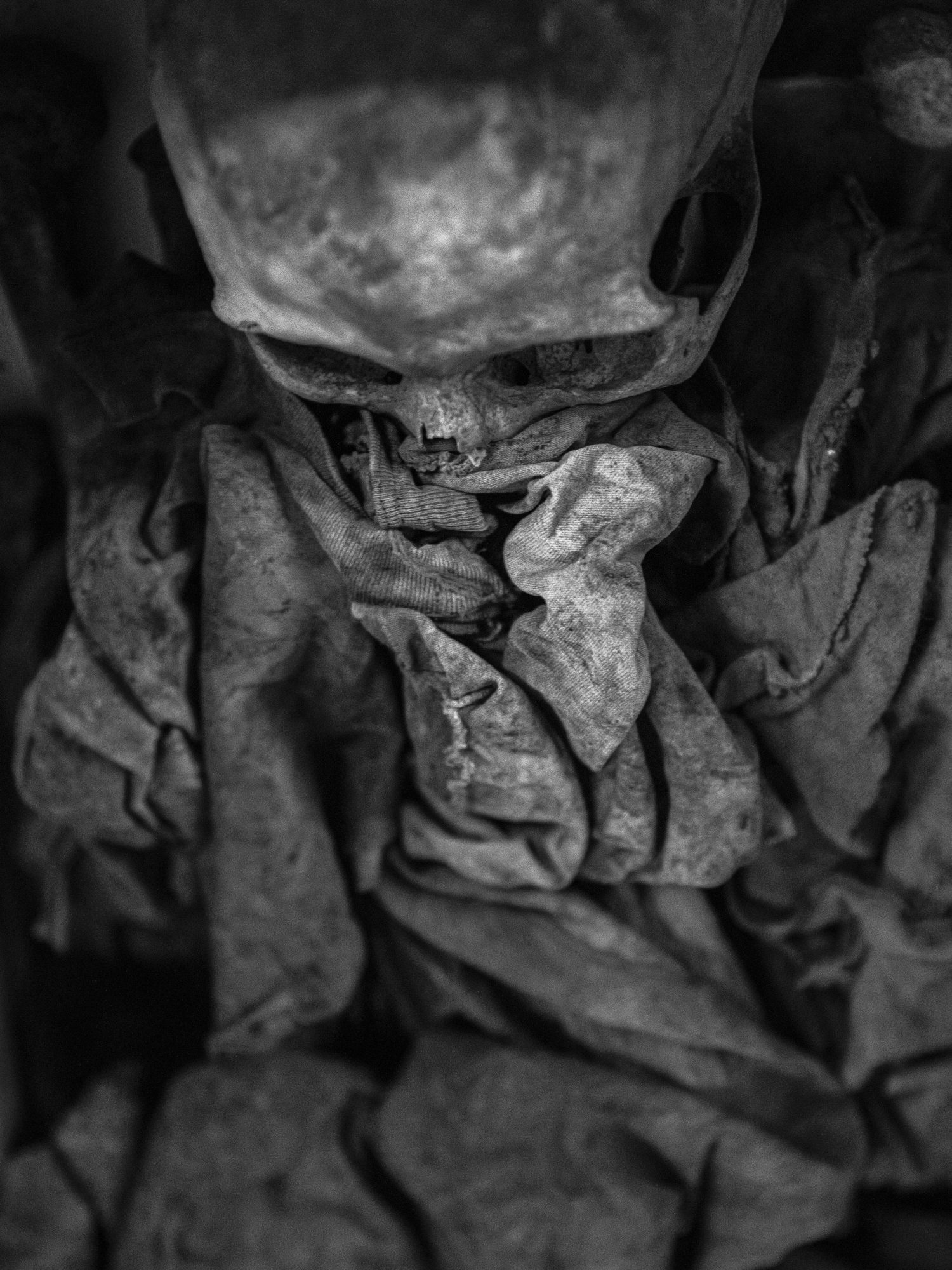
The remains of a victim of Peru's 1980s/90s insurgency are assembled by forensics scientists before being returned to their family members at an official ceremony marking what is known as the 'Rio Blanco' case.
A withered maguey plant in the town of Pujas.
The process of restitution and re-burial insome of the most prominent cases that arose out of the Peruvian armed conflict have been stalled for decades. Since 2012 Musuk Nolte has been documenting the various stages of restitution,mourning, burial and other ritual events performed by the long-suffering relatives of the victims, aiming to contribute a visual record that can strengthen the processes of historical memory and accompany the families of those who died.
In the 1980s class divisions, racism and inequality fuelled the fire that led to an explosion of violence wrought by the Shining Path and the governments heavy-handed response. Even though the armed conflict also brought about the end of the autocratic regime of Alberto Fujimori many of the issues that caused the original uprising remain unresolved. In recent years Peru has experienced a serious political and social crisis which has led to a radical polarisation of the population. The country's social structure has been fractured and the wounds that remain embedded in society due to the armed conflict have re-emerged.
Relatives of Arquimides Rua Gamboa, watch the reconstruction of the remains of their father's body as it is returned to them by members of a forensic team from the public ministry in the town of Pujas.
A man wipes a portrait of Claudio Morales, President of the Ocros community, who was killed by the terrorist group Sendero Luminoso in Ayacucho, in 1984.
Relatives of the dead in the Rio Blanco case gather at a wake after the bodies of those who were kidnapped and then murdered by a Peruvian army patrol in 1983 were delivered by the Peruvian public ministry.
Relatives of victims of the so-called 'Rio Blanco' case, one of the many mass murders that took place during Peru's 1980s/90s insurgency, take part in a wake for their family members whose remains have been returned many years after their deaths and disappearances.
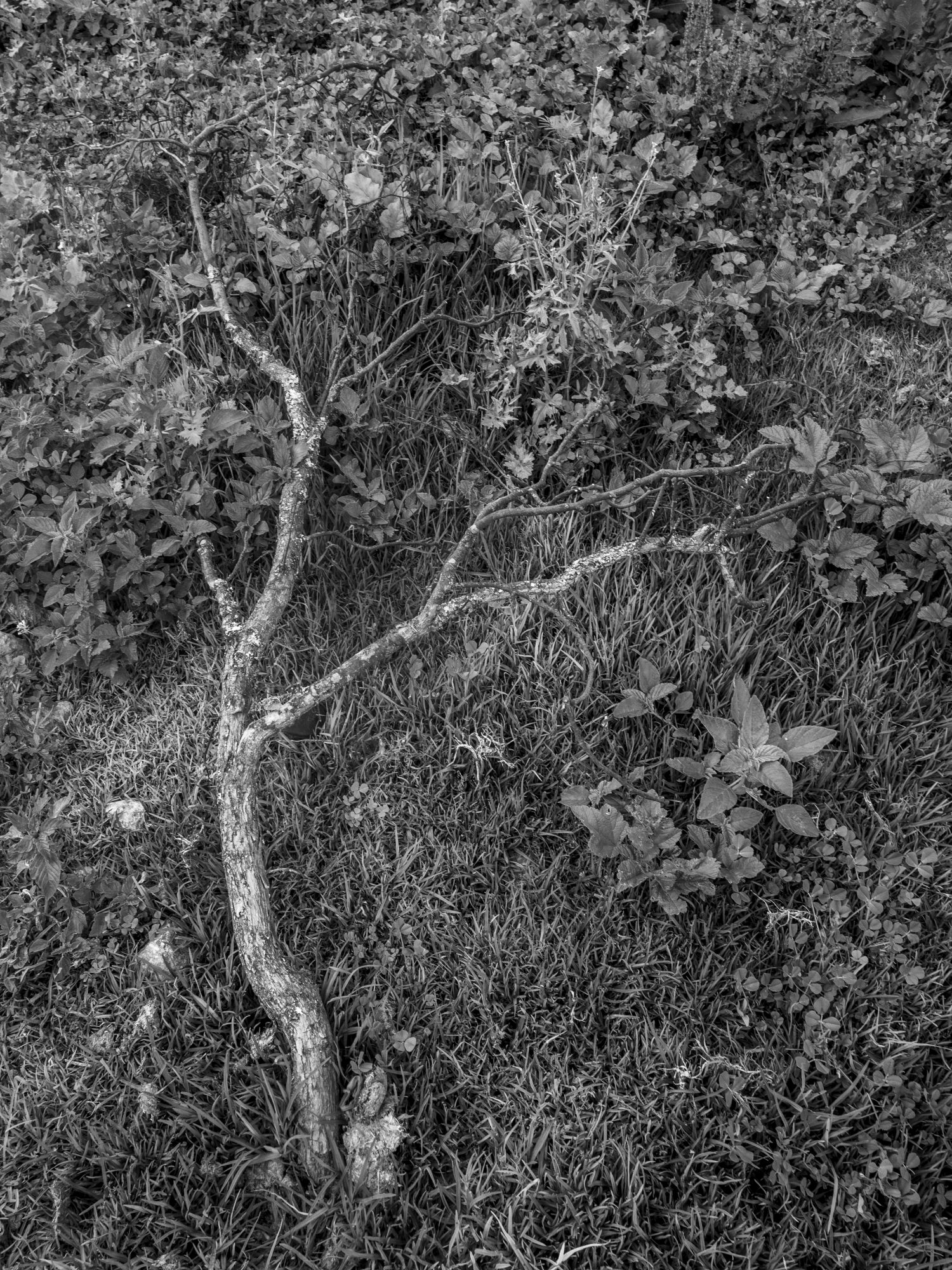
A shrub lies in a field near the cemetery of Pujas, where the bodies of the Rio Blanco case would be buried.
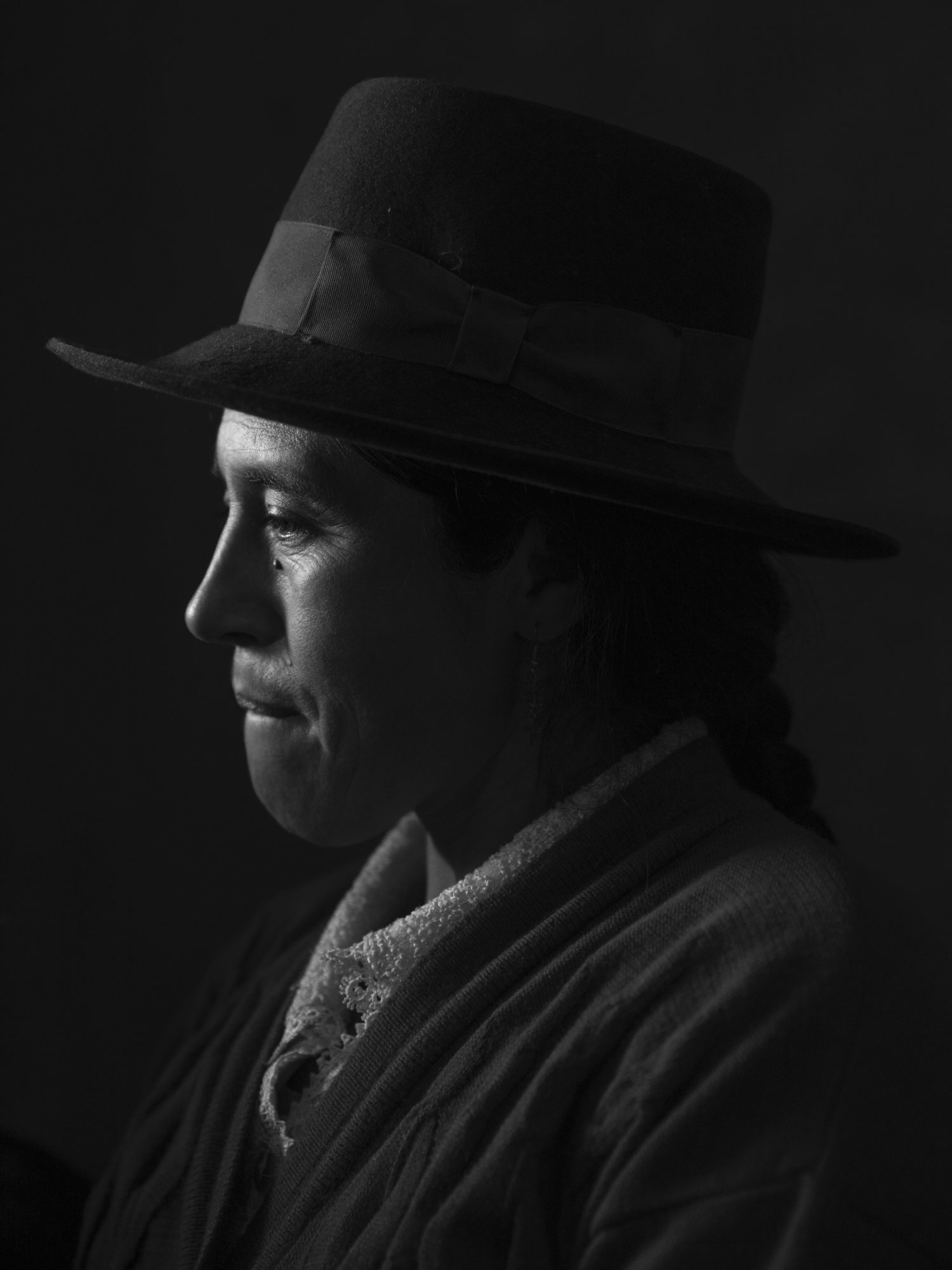
Malila Palomino, who was three years old when her father Antonio Espinoza was murdered during Peru's insurgency of the 1980s/90s, mourns her father whose remains have finally returned many years after his death.
Malila Palomino, who was three years old when her father Antonio was murdered, holding his portrait as she mourns her father whose remains have finally returned many years after his murder during Peru's insurgency of the 1980s/90s.
Urbano Huamani Vegara (47) during a burial service for his brother Elihoref. Elihoref served in the Peruvian army and in 1991 was travelling the same road as a group of civilians detained by the army. He was detained by a patrol led by lieutenant Bendezu while his father and nephew, who were travelling with him, went ahead, confident that his military background would keep him safe. However, he was murdered along with 13 members of the Hilario family in what became known as the 'Santa Barbara' case.
Antonio Espinoza's mother at the wake for her son in Pujas. Antonio was kidnapped and then murdered by the Shining Path terrorist group in 1983.
A funeral procession during a burial ceremony in the town of Soras. On 16 July 1984 a bus from the 'Cabanino' company was doing the usual route towards Soras. In the vehicle were 40 members of the terrorist group Sendero Luminoso (Shining Path). The bus stopped in the towns of Chaupishuasi, Doce Corral and Soras. Along this route, over one hundred people who refused to join the group were murdered. Over 27 years later the remains of 17 of these people are finally layed to rest Soras local cemetery.
Relatives mourn the dead during a funeral where 14 people were buried more than quarter of a century after they were murdered in the so-called 'Soras case'.
Relatives attend a wake for those murdered in what became known as the 'Rio Blanco case' which took place during Peru's insurgency of the 1980s/90s.
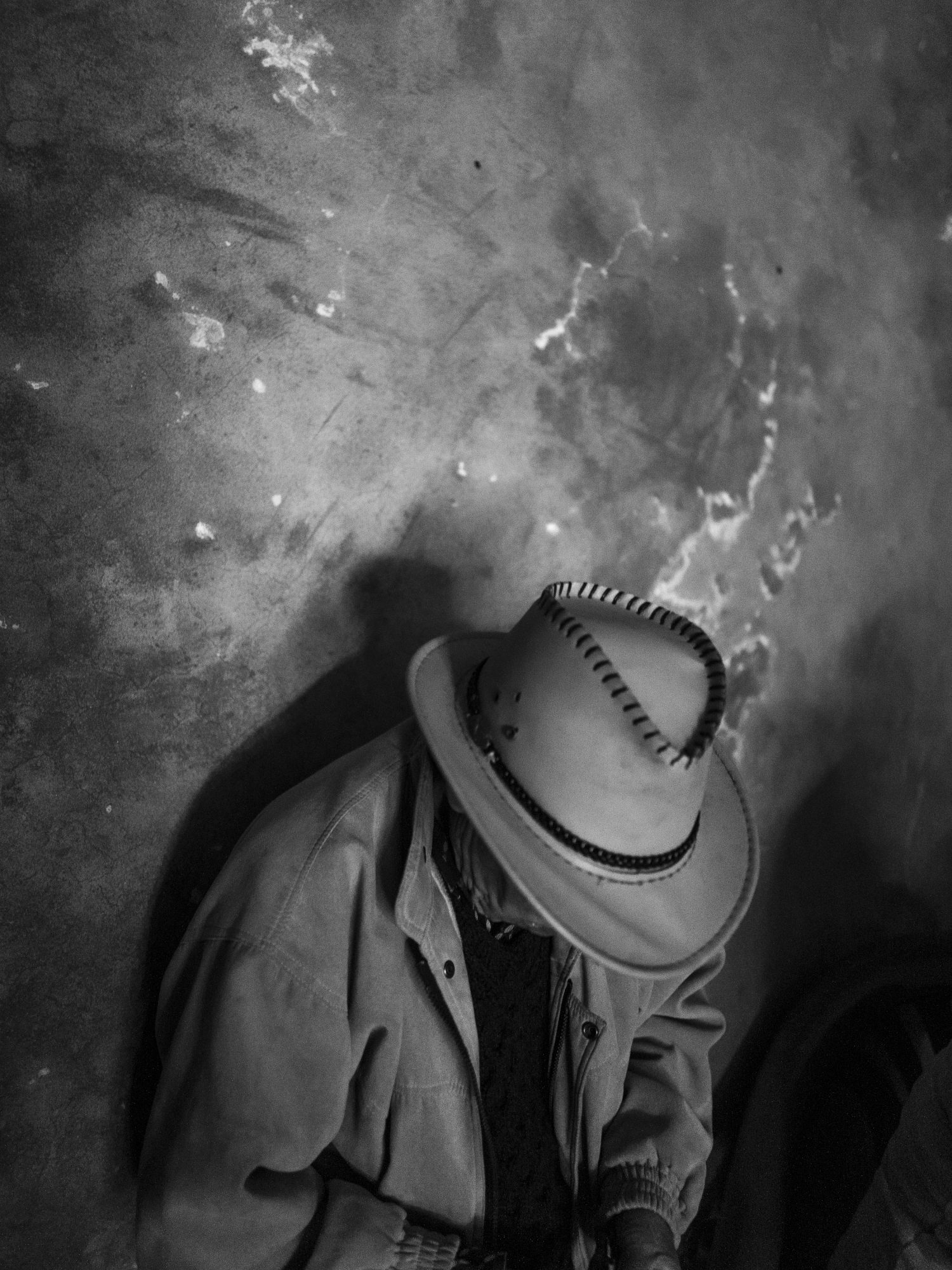
A family member resting during a wake for those killed in what became known as the 'Rio Blanco case' which took place during Peru's insurgency of the 1980s/90s.
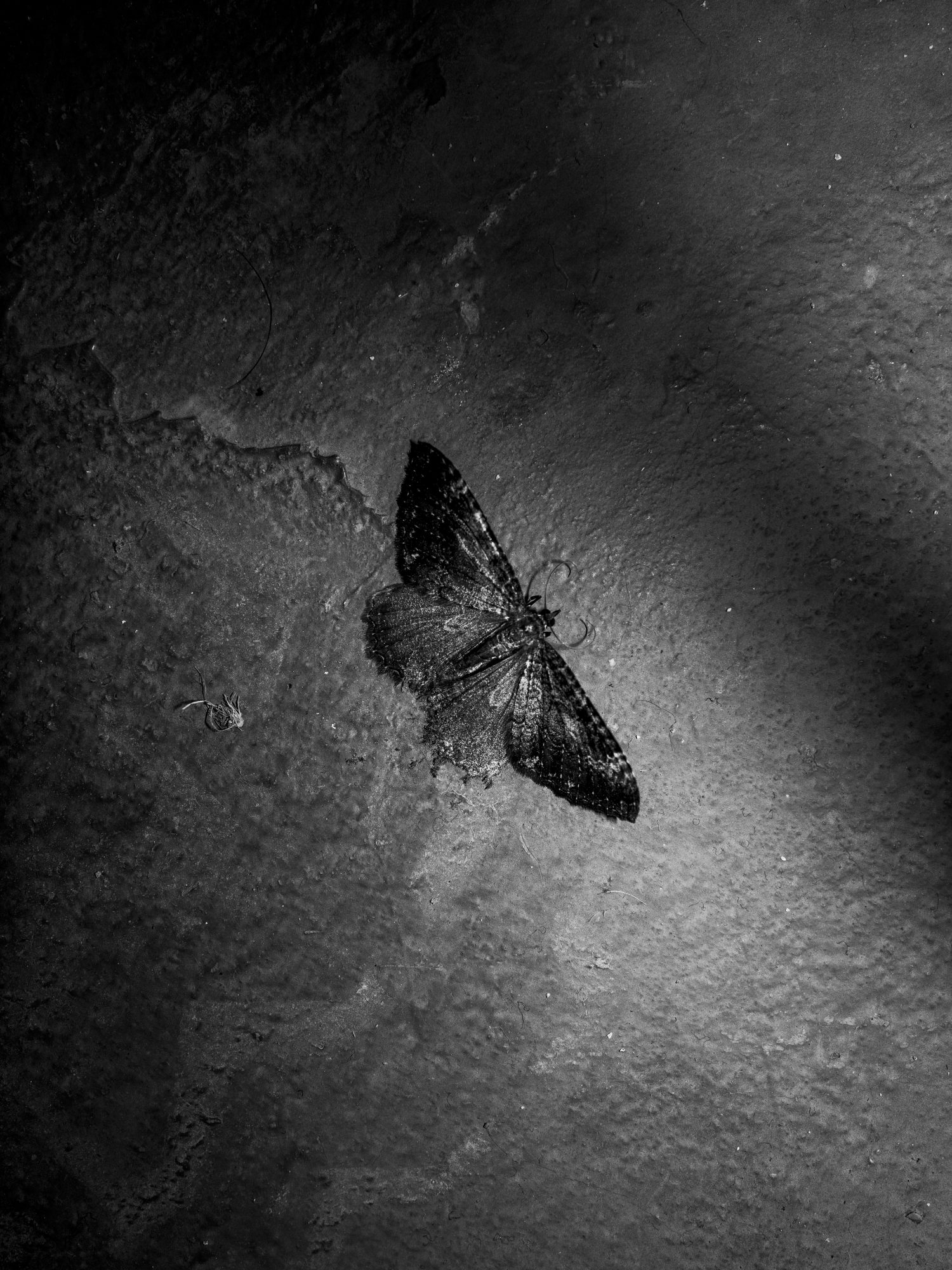
A moth found during the wake for those killed in the Rio Blanco case. In Andean mythology, the presence of moths is believed to be closely associated with an encounter with death.
Residents accompany a funeral procession to the Pujas cemetery where the remains of people murdered and disappeared during Peru's insurgency of the 1980s/90s will finally be buried.
Zosimo Hilario whose father was murdered in 1991 along with 12 other family members by an army patrol in what became known as the 'Santa Barbara' case.
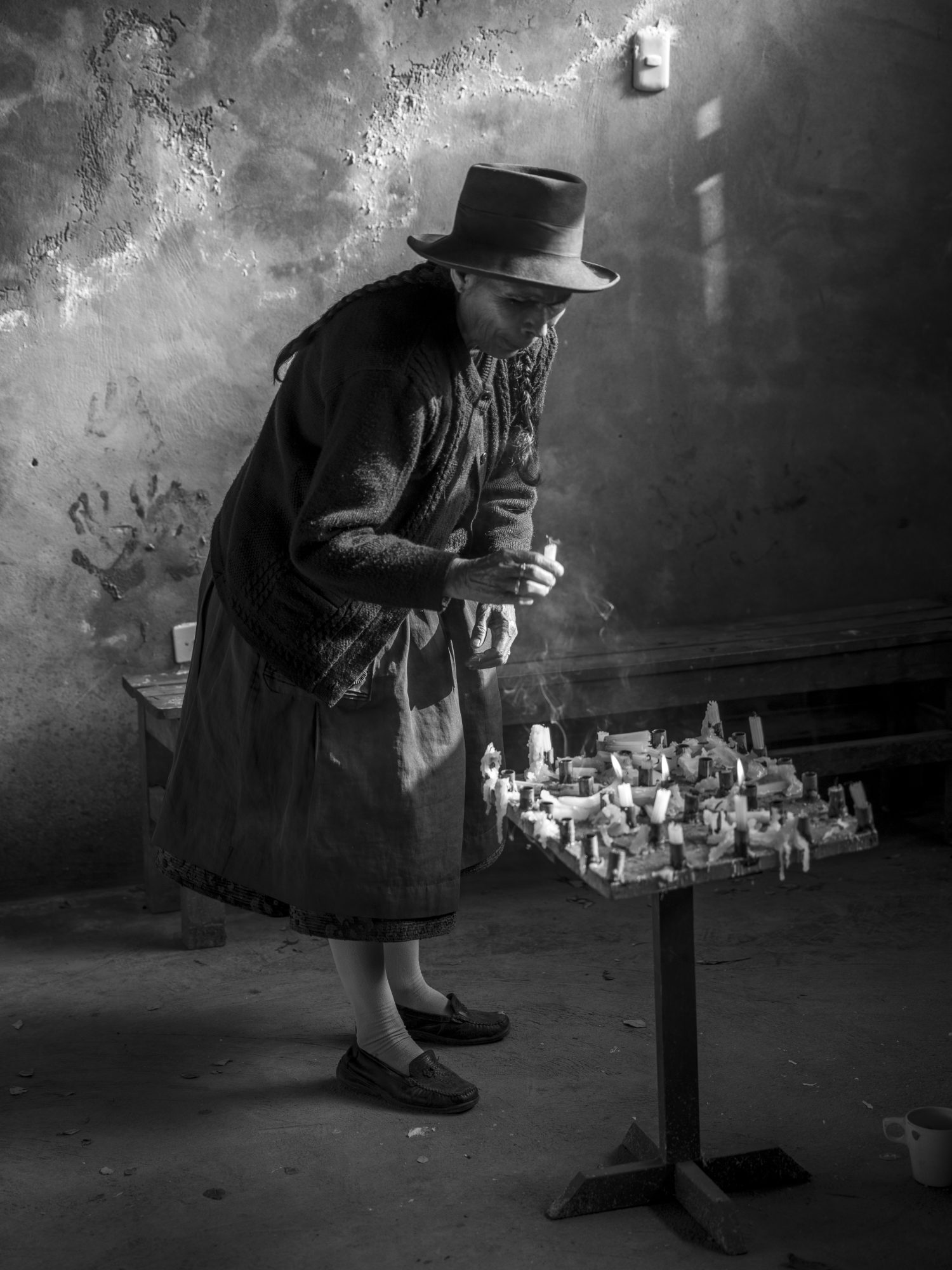
A woman places a candle on a table during the communcal wake, commemorating the victims of the so called Rio Blanco case.
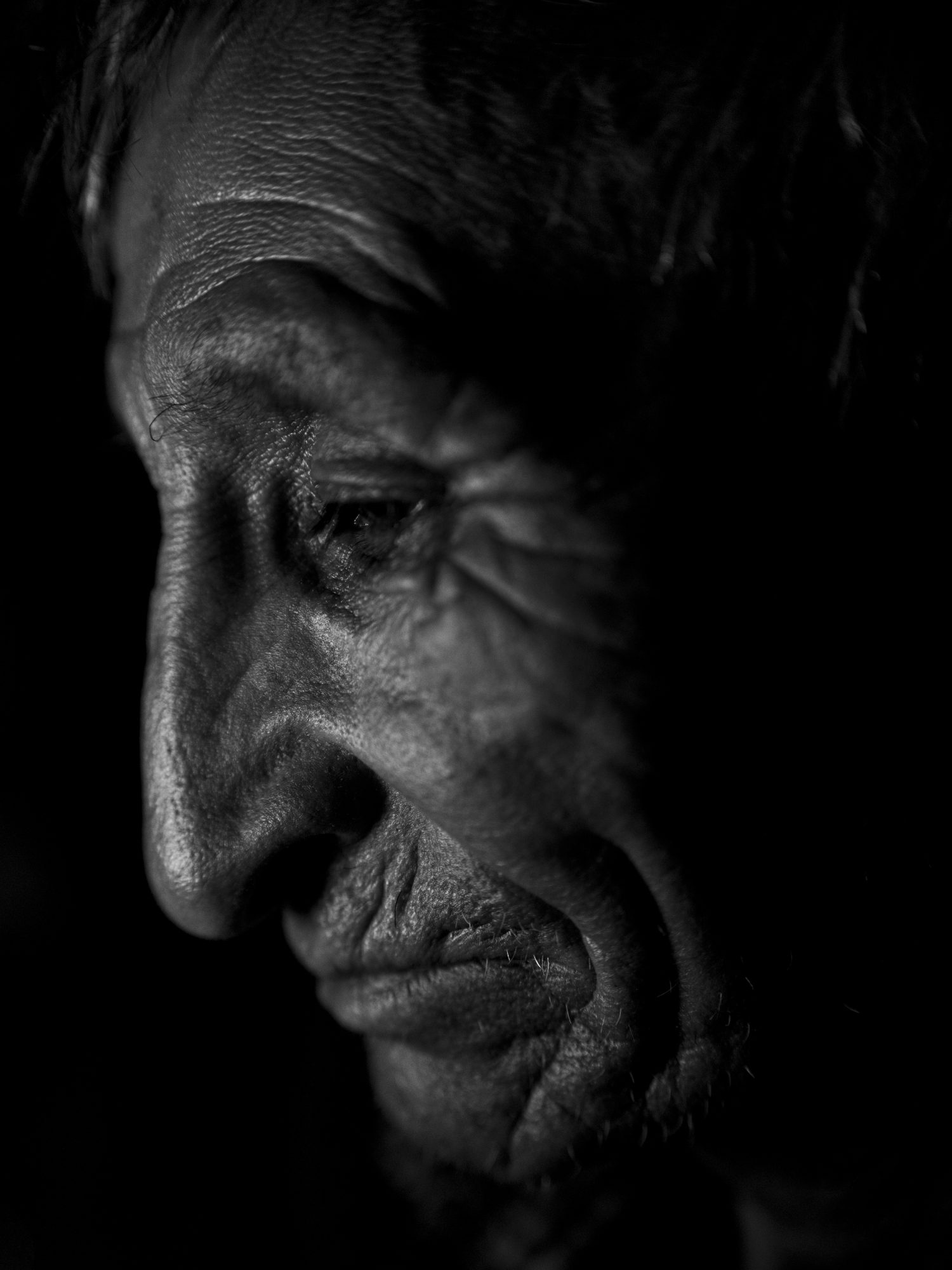
Fausto Melgar (67) waited more than 37 years to be able to watch over and bury the remains of his mother Agustina Melgar, killed by a Peruvian army patrol, along with 69 other villagers, in the Accomarca massacre. On 14 August 1985, a military patrol under the command of Telmo Hurtado killed almost all the residents of the town of Accomarca, alleging that they were members of the Sendero Luminoso ( The Shining Path ) terrorist group. Hurtado, nicknamed 'the butcher of the Andes', is now in prison after being extradited from the United States where he lived.
A portrait of Apolinario Pizarro Zarate rests on a coffin containing the skeletal remains that were recovered by the forensic team of the Public Ministry of Peru in the so-called Rio Blanco case.

